20 Beautiful Places in Vienna You Can Visit for FREE
WanderInEurope is reader-supported. Affiliate links and ads help us keep creating useful content for you.
As someone from a developing nation with a less powerful currency, I often find that spending a few days exploring various European cities can be quite taxing on my budget.
Vienna, as Austria’s capital and largest city, is no different. When you consider the entry fees for the city’s top attractions and the best experiences it has to offer over several days, it’s clear that careful budgeting is essential.
Did you know? The last time I checked:
- the admission fees for Vienna’s incredible museums and palaces ranged from 20 to 35 USD?
- For cultural experiences like the Spanish Riding School, you’re looking at about 30 USD.
- And let’s talk about the musical experiences Vienna is renowned for – they’re priced at 20 to 30 USD for regular tickets, 55 to 100 USD for mid-tier, and a whopping 300 USD for those once-in-a-lifetime VIP concerts!
Without a Vienna Pass, if you’re planning to visit 2 or 3 of these activities or attractions each day during your stay, you could be looking at a pretty hefty bill already. But don’t worry, you don’t have to spend a fortune to enjoy Vienna.
There are plenty of free attractions in the city that you can add to your itinerary, allowing you to make the most of your trip without emptying your wallet. The list of free-to-visit spots I’m about to share with you are not just free; they’re also stunning and definitely wander-worthy!
Summary
Among the 20 free attractions I’m excited to share with you, a few are Vienna’s architectural wonders. The list also features the little gems I’ve discovered while exploring Old Town Vienna and picturesque spots one can encounter while strolling along Ringstrasse. Yes, even the viewpoints that you can visit at no cost are included. Let’s jump right in!
Note: The exact locations and official websites of various tourist attractions are listed in the resources section of this post. I have compiled them for your convenience, so you can easily access each one as you plan your trip.
New find: Vienna Experiences That Stay Under $100 (opens in a new tab)

1. Palais Daun-Kinsky
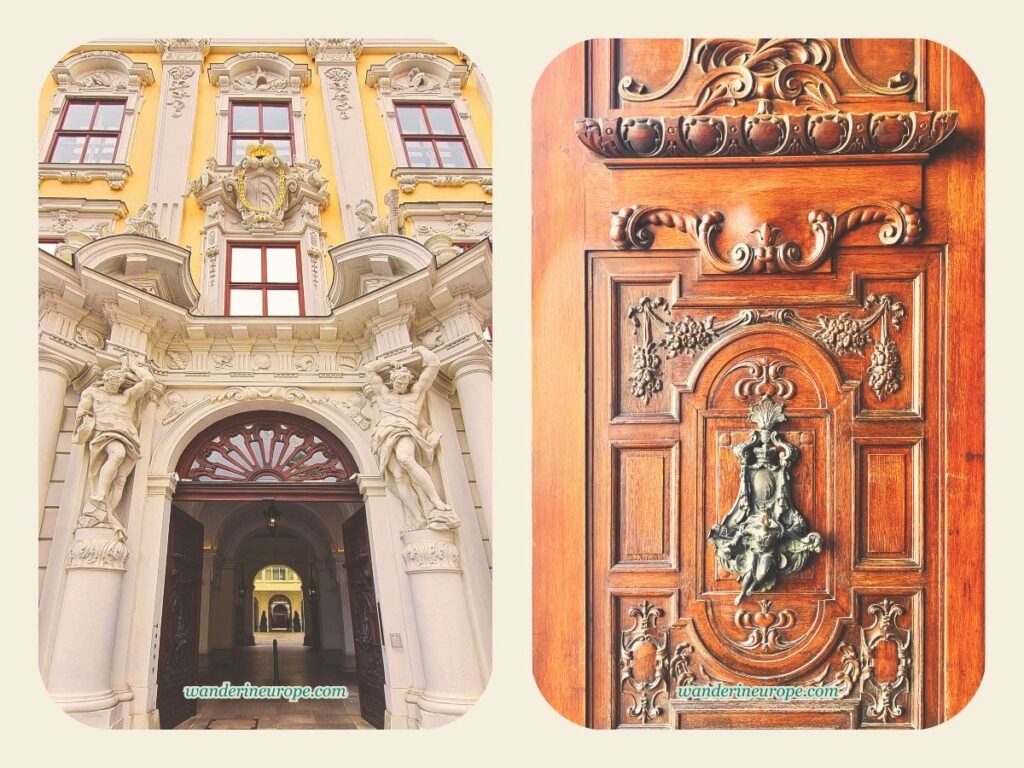
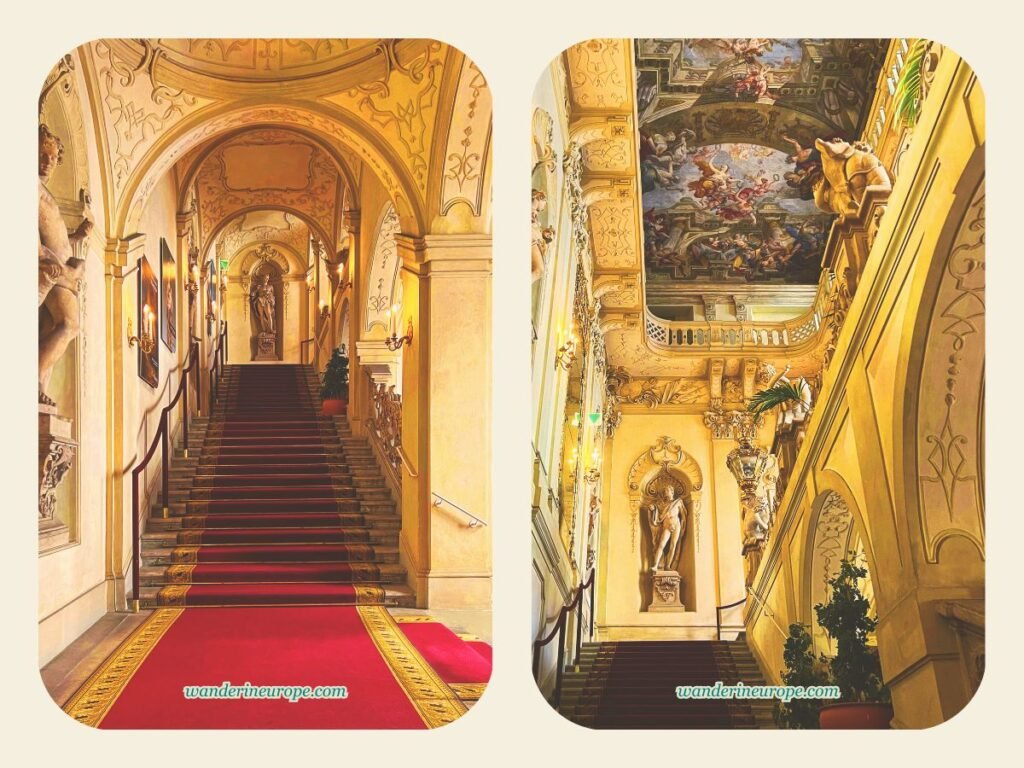

Did you know that Vienna has more stunning palaces than just the cultural-experience-packed Imperial Palace and the magnificent Schönbrunn Palace? There are several other palaces in the city, and among them, Palais Daun-Kinsky is one that you can peek into for free.
Originally built for Count Wirich Philipp von Daun, it later became the property of the Kinsky family, hence the name of the palace. When its doors are open, you can have a quick visit and behold its breathtaking baroque staircase. It’s one of the most beautiful in the Old Town, without a doubt!
It’s good to know that Palais Daun-Kinsky is also a place where you can attend concerts. It’s an opportunity for a memorable time in Vienna, especially since the concert venue is its majestic grand hall, Ovaler Festsaal.
Unless you are attending a concert, a visit to Palais-Daun Kinsky could last no more than 10 minutes. So, if you’re wondering if it’s worth it, I’d say it’s only a must-see if you’re on a walking tour of Old Town Vienna or simply passing by Freyung, which is the square where the palace is. Of course, Palais Daun-Kinsky is well recommended for travelers with a deep interest in architecture!
2. Justizpalast
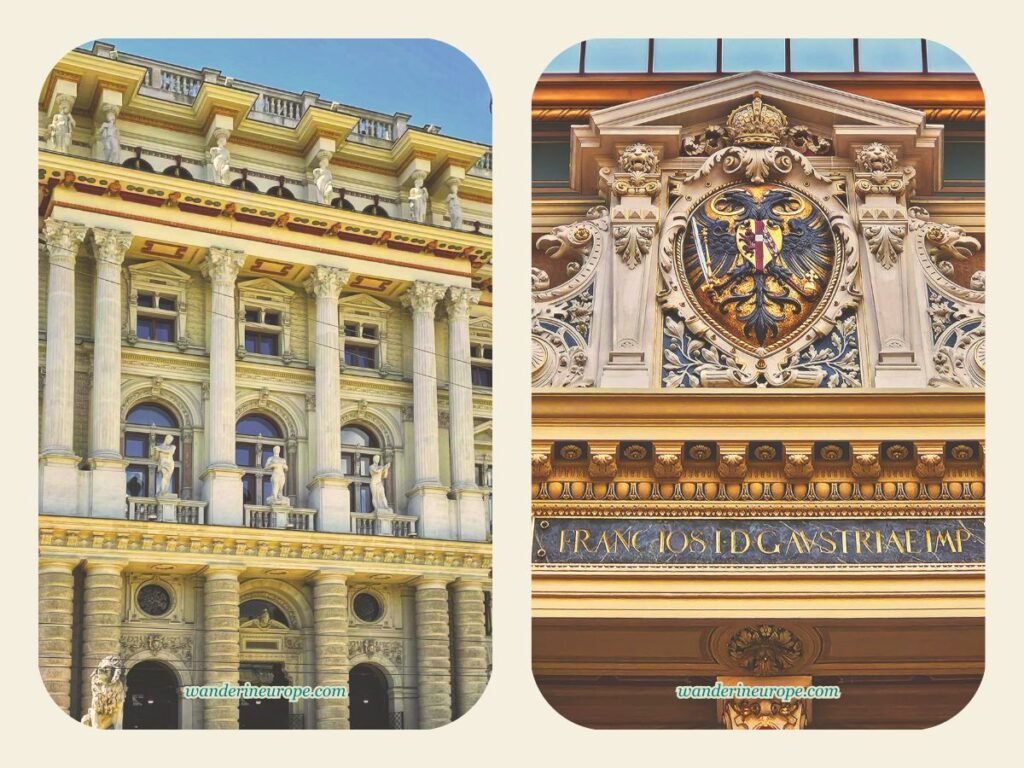
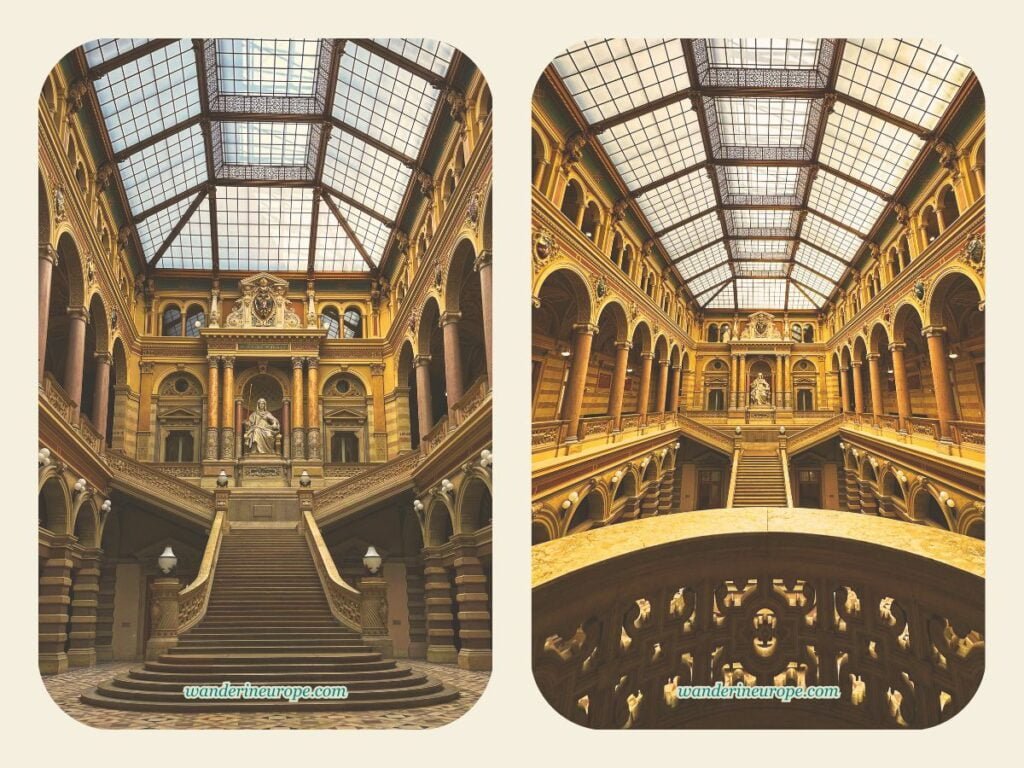

If you plan to stroll along Ringstraße, the 19th-century Renaissance-style government building, Justizpalast, is an architecturally impressive stop that you can enter for free. It’s home to the country’s Supreme Court and has been the site of historical events, such as the trials during the Austrian July Revolt of 1927.
During your visit, you’ll find that this landmark’s exterior is less ornate than some of its Ringstraße neighbors, such as the Austrian Parliament and the Naturhistorisches Museum. Yet, the true marvel lies within. The majestic staircase, adorned with elegant curves that ascend to a statue of Lady Justice, offers a stunning visual experience.
If the weather is favorable during your visit, the sunlight streaming through the glass ceiling above the staircase creates an ethereal scene. Definitely, it’ll inspire you to take a few photos. Before you go, note that the Justizpalast is only open from Monday to Friday, from 7:30 am until 3:30 pm.
3. Belvedere Palace Garden
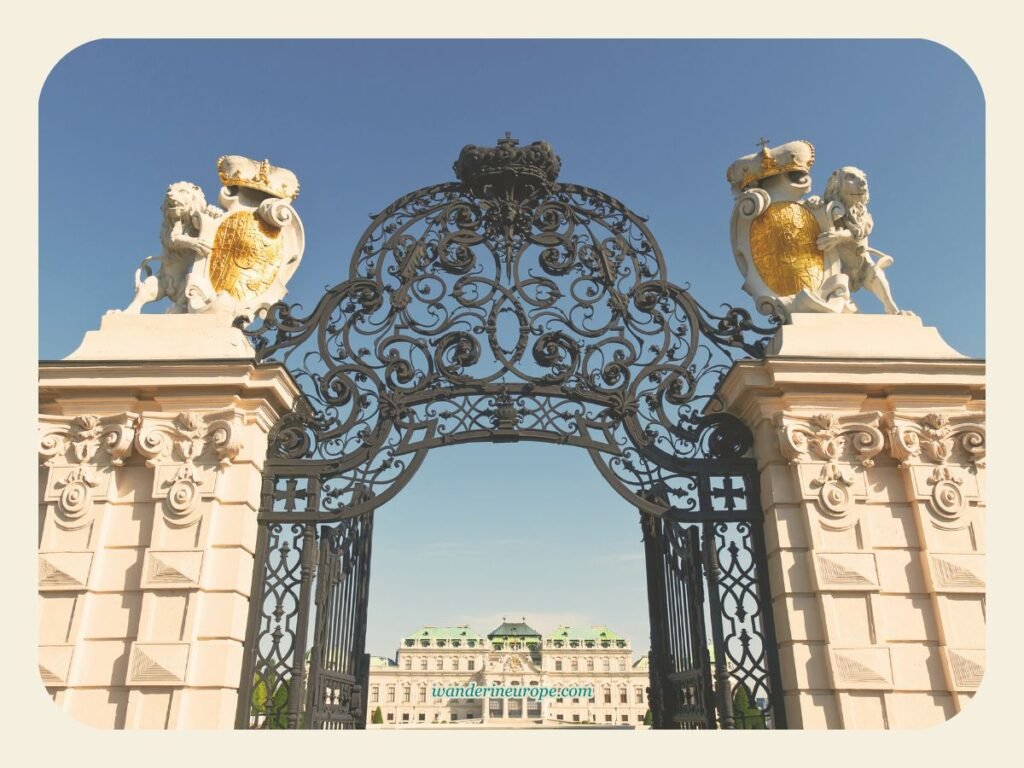
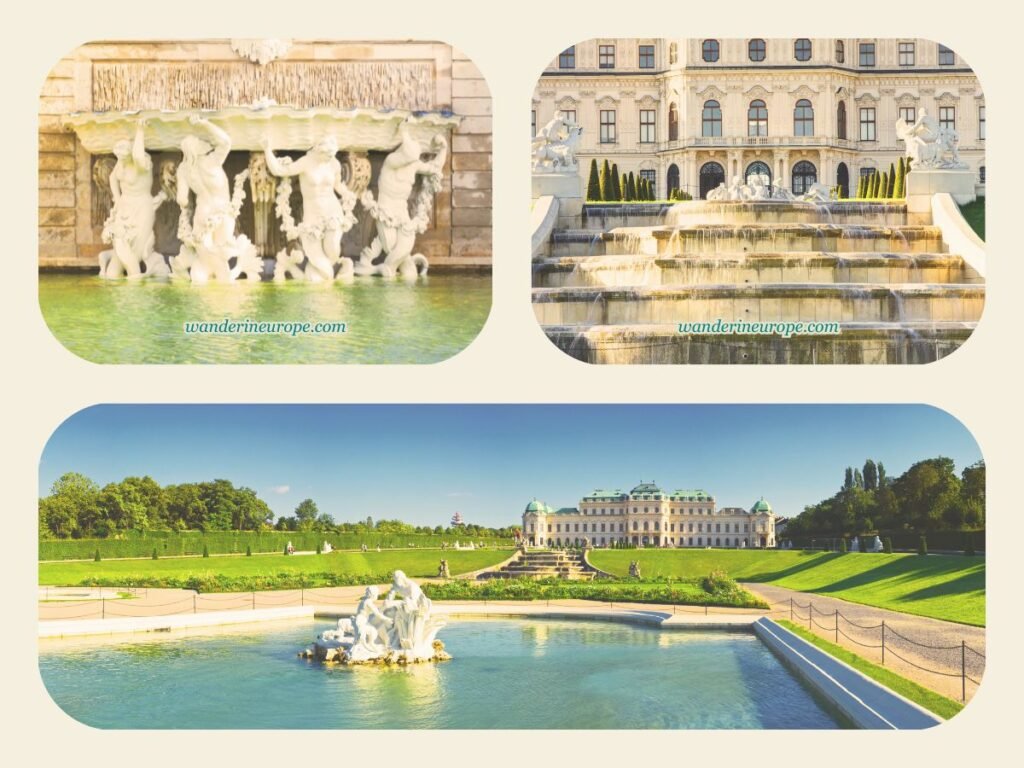

Belvedere Palace is one of the most beautiful places in Vienna; a stunning example of Baroque architecture, built between 1717 and 1723 for the illustrious Prince Eugene of Savoy. Home to unique and notable artworks, including ‘The Kiss’ by Gustav Klimt, this palace is among the top attractions in Vienna that I recommend.
The palace is actually an estate comprising three main parts: Upper Belvedere Palace, Lower Belvedere Palace, and the Baroque Garden. While the two palaces have an entry fee, visitors can freely wander in its Baroque Garden, which, by the way, is the most picturesque garden I know in the city.
As its name suggests, this garden of Belvedere Palace is a masterpiece of Baroque garden architecture. It’s adorned with cherubic sculptures, tiered fountains and cascades, majestic wrought iron games, and most importantly, a very detailed symmetrical flower parterre—the most impressive that I’ve found in Vienna.
Upon your visit, you’ll discover numerous picturesque spots. Take, for instance, the captivating view of the Upper Belvedere Palace from the fountain area adjacent to the Lower Belvedere Palace.
Where is Belvedere Palace? It is outside the Old Town but within walking distance if you’re already in the Schubertring section of Ringstrasse. The palace is also within walking distance from Karlskirche and the central train station.
Take a look at my Belvedere Palace guide for additional photos of the gardens and the exhibits within the palace.
4. Schönbrunn Palace Garden
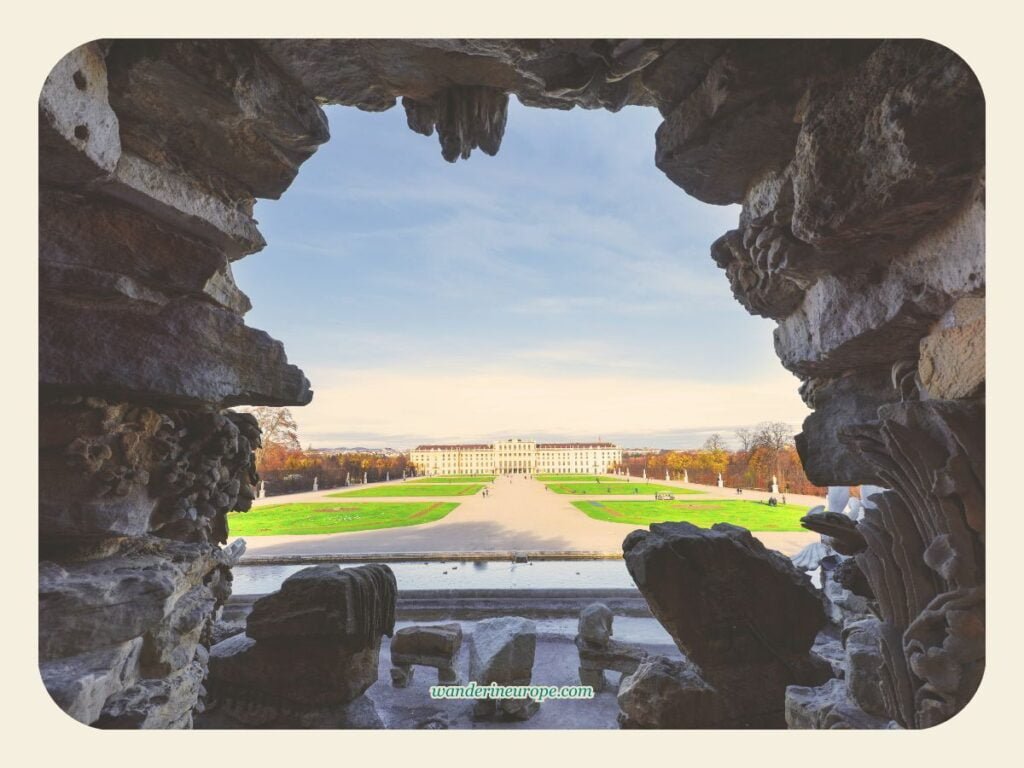
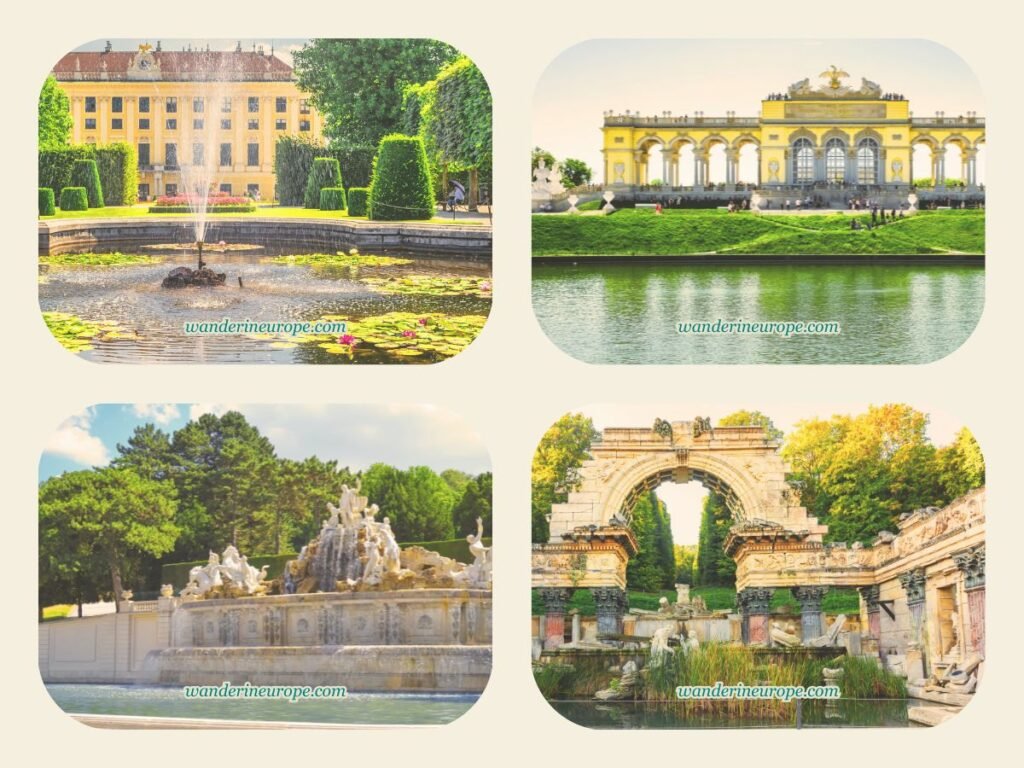

Schönbrunn Palace is the summer residence of the Habsburgs, packed with important cultural heritage discoveries you may find in the city. There’s something about Maria Theresa, Emperor Franz Joseph, Empress Sisi, and more. And like Belvedere Palace, Schönbrunn Palace is among my top recommendations. Its garden park, which is so vast, is also free to visit.
As far as I know, the garden of Schönbrunn Palace is Vienna’s largest palatial garden. It’s so large that it includes a maze, a botanical garden, a few parterres, symbolic monuments, and gigantic picturesque fountains! Can you believe all those fit inside the Schönbrunn Palace Garden? Not to mention, the garden is also home to a zoo! I’m sometimes confused whether it should be called a park or simply a garden.
Not all parts of Schönbrunn Palace Garden are free, though; I’m quite sure that the free ones can already keep you engaged for more than half a day. Here are some unmissable spots: Gloriette for an overlooking view of the entire garden, Roman Ruins for a time-transporting vibe, and other picture-worthy spots that are perfect for epic photo souvenirs and selfies.
It’s good to know that Schönbrunn Palace has more to offer than its amazing garden and an insightful tour of the palace’s rooms and halls. You can also attend a concert here, have a virtual reality experience, and explore a museum filled with intricate royal carriages. You can try them during your trip for a worthwhile visit to the palace.
Here’s everything you need to know about Schönbrunn Palace. And here is a list of picturesque spots in the Schönbrunn Palace Garden.
5. Burggarten
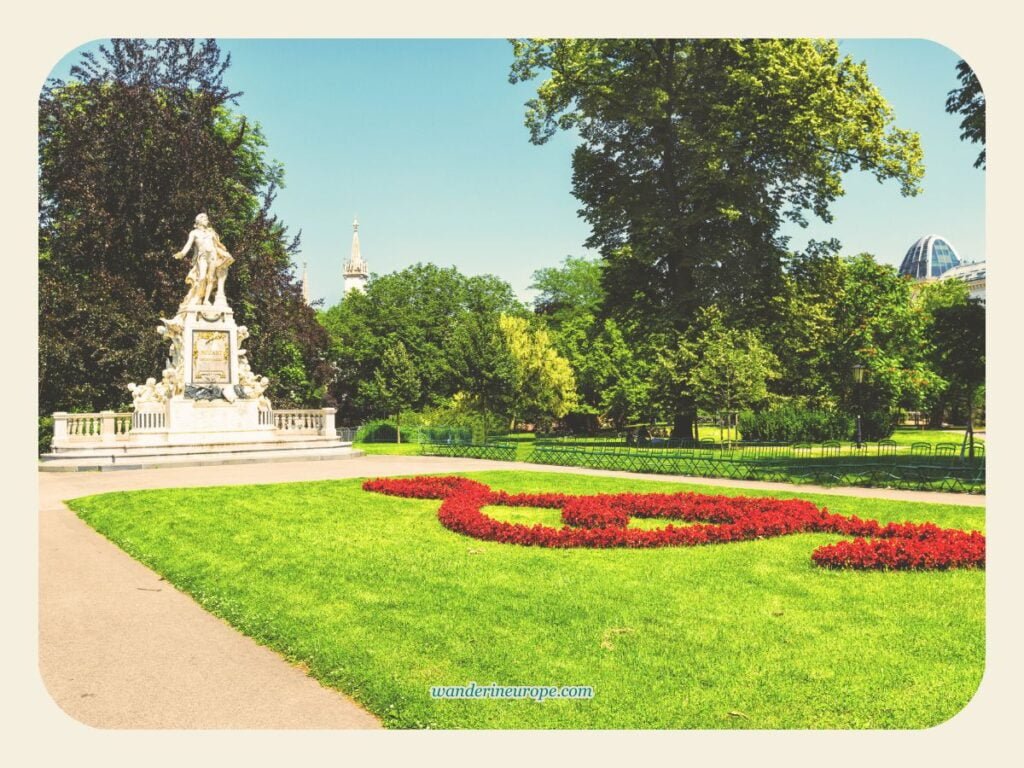
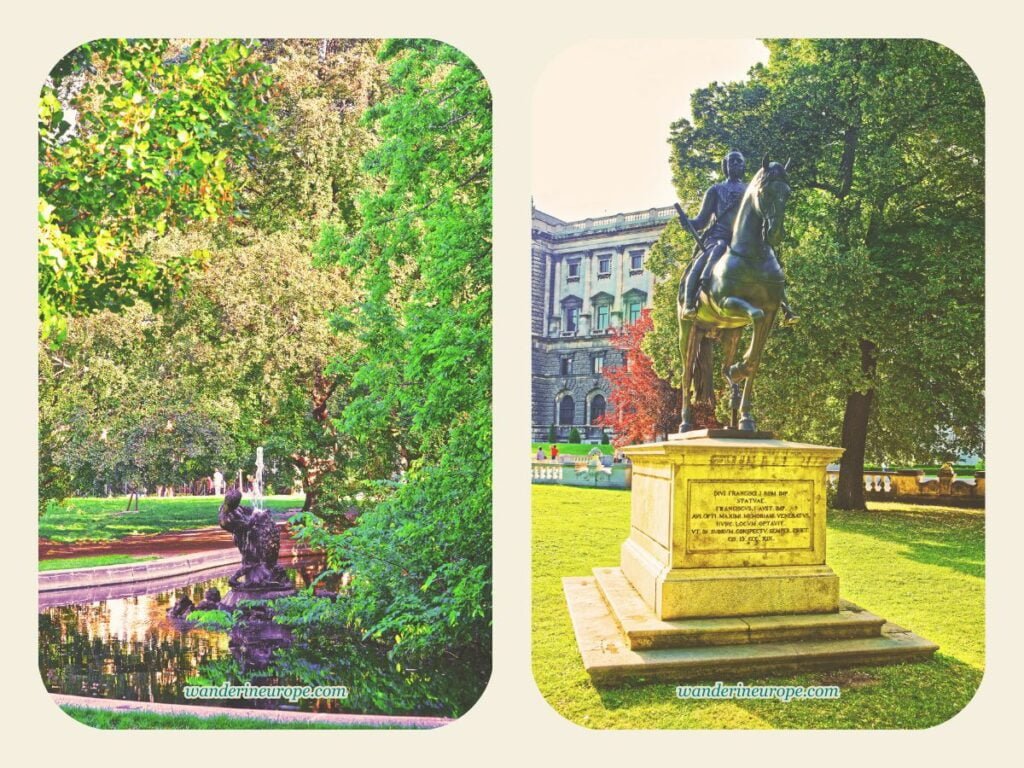

Of course, the Hofburg or Imperial Palace also has a beautiful garden that is free to visit. It’s called Burggarten and you can find it just behind the Neueburg of Hofburg.
Interestingly, it was called Kaisergarten or Emperor’s Garden in the 19th century; a place where the Habsburgs would retreat for a quick respite after a whole period of duty. You can imagine them relaxing by the garden’s Hercules and Nemean lion fountain or riding Lipizzaner horses, which, by the way, are sometimes still grazing in the garden.
While Burggarten is smaller than the first two gardens mentioned, it boasts the Mozart Monument, one of Vienna’s most photographed landmarks. Don’t forget to take a photo of yourself with Mozart’s G-Clef flower bed if you visit the garden during your trip!
If you’re fascinated by historical icons, the statues in Burggarten will help you imagine what Franz Stephan looked like in his equestrian statue. You can also get an idea of Emperor Franz Joseph’s emotions during the end of the Habsburg rule.
At the corner of Burggarten, on the farthest side of the garden from Hofburg, you can find the statue of Johann Wolfgang von Goethe—a tribute to the renowned German poet and writer.
If you’re considering a visit to the Hofburg, either before or after exploring the Burggarten, take a look at my guide for the top experiences available at the Hofburg.
6. Volksgarten
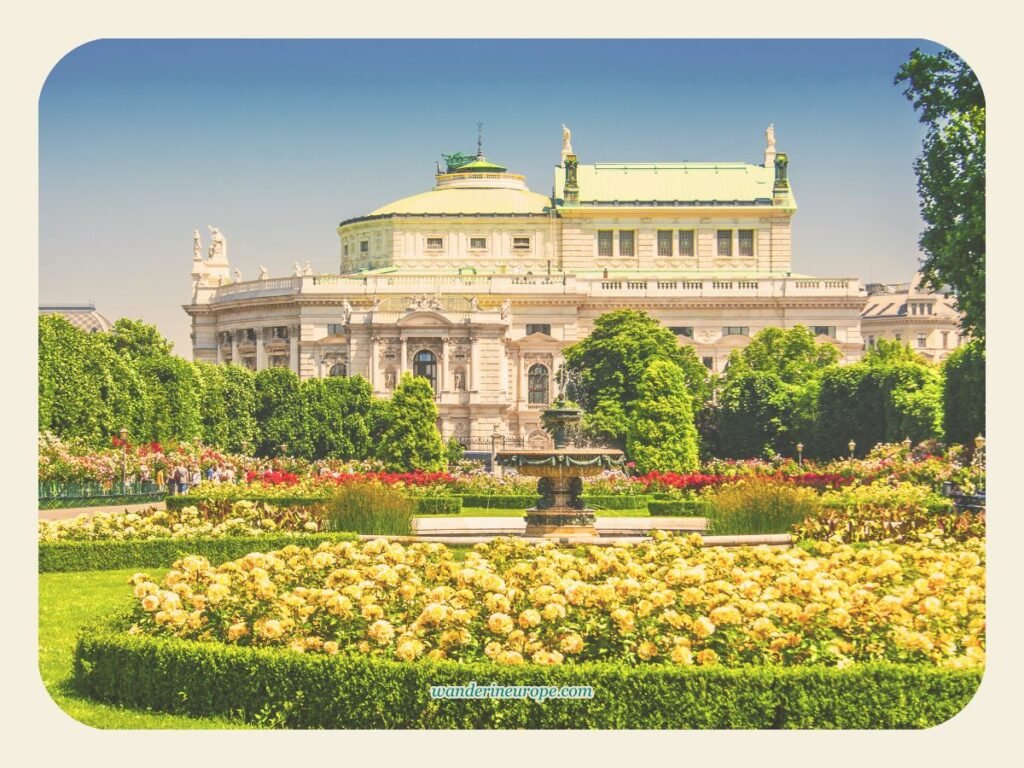
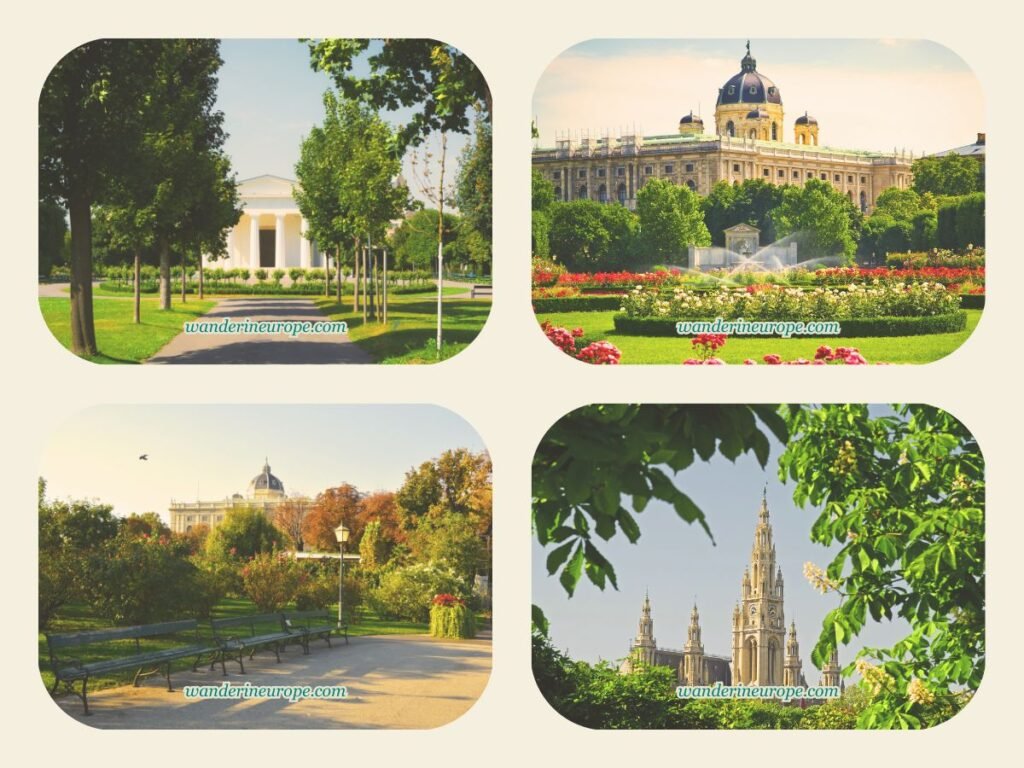

The gardens of the palaces in Vienna offer you plenty of opportunities to take in imperial beauty without spending a dime. However, they’re not your only options. Volksgarten, or People’s Garden, is a beautiful alternative. Here, I realize how lucky Viennese people are; they were also given a space to unwind that is as picturesque as what their rulers have.
What I like the most about Volksgarten are the different picture-perfect scenes you’ll see everywhere you look. Nature blends with architecture. The city’s architectural marvels along Ringstrasse peek over the trees and flowery plants here. From Hofburg to the Austrian Parliament Building and Rathaus to Burgtheater, they serve as eye-pleasing backdrops to the colorful flowery plants and trees in the garden.
Of course, there’s plenty of shade and benches—it’s so nice to relax here. Sit by the fountains—Triton und Nymphe and Volksgartenbrunnen—to hear that soothing splash of water while taking in the lovely views.
In the two opposite corners of the garden, you can find two monuments which are also photo opportunities. Along Universitätsring, you’ll find the Franz Grillparzer monument. It’s quite interestingly positioned right in front of the Naturhistorisches Museum when you look from the center of Volksgartenbrunnen.
On the opposite side lies the monument of Empress Elisabeth. I think it would also make a stunning photo subject. Capture it with a camera that has a good zoom as you walk down the tree-lined path towards her monument.
7. Theseustempel
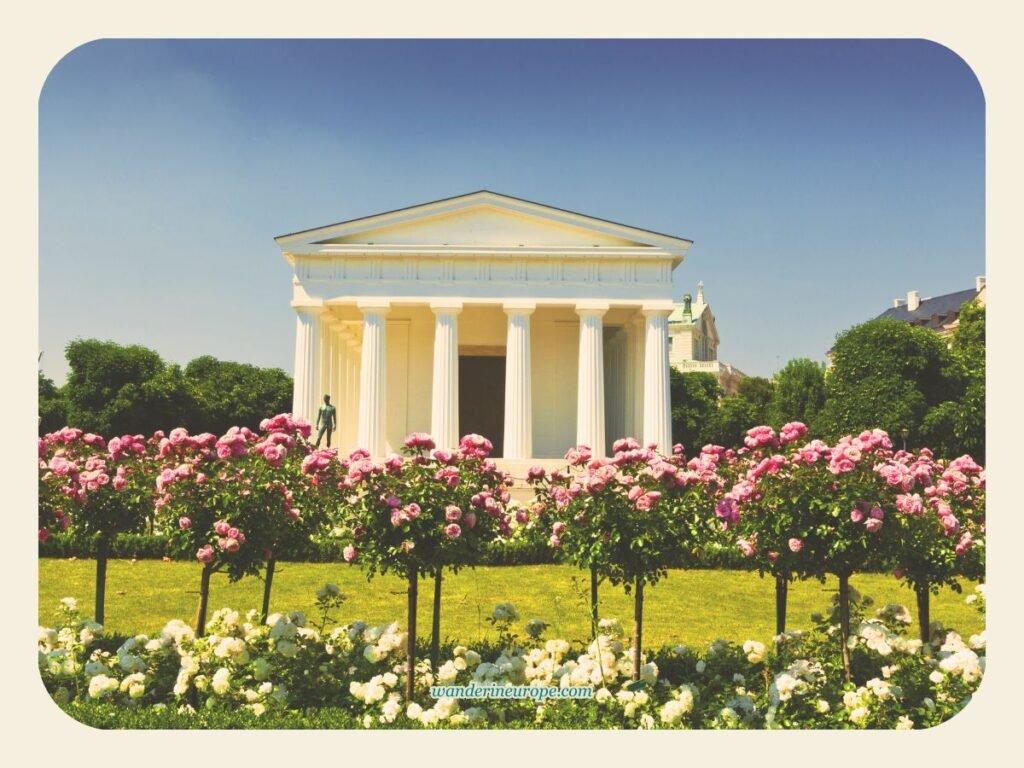
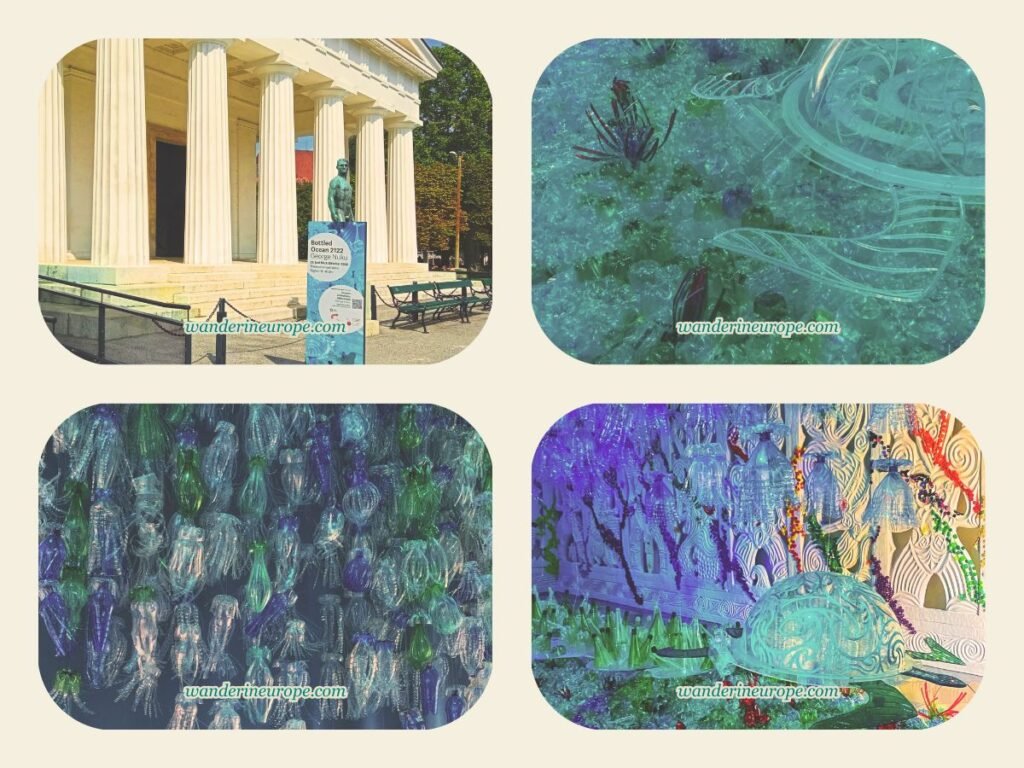

In the heart of Volksgarten lies another landmark in the city that’s free to visit: Theseustempel. It’s the white neoclassical structure from the 19th century, inspired by the ancient Temple of Hephaestus in Athens. You can think of it as a mini version of its Greek counterpart.
Today, this temple serves as a venue for temporary art exhibitions, which are often contemporary artworks. The exhibits change periodically, but last time I checked, there was an artwork depicting an ocean. Impressively, the artwork was made entirely of plastic bottles!
8. Stadtpark
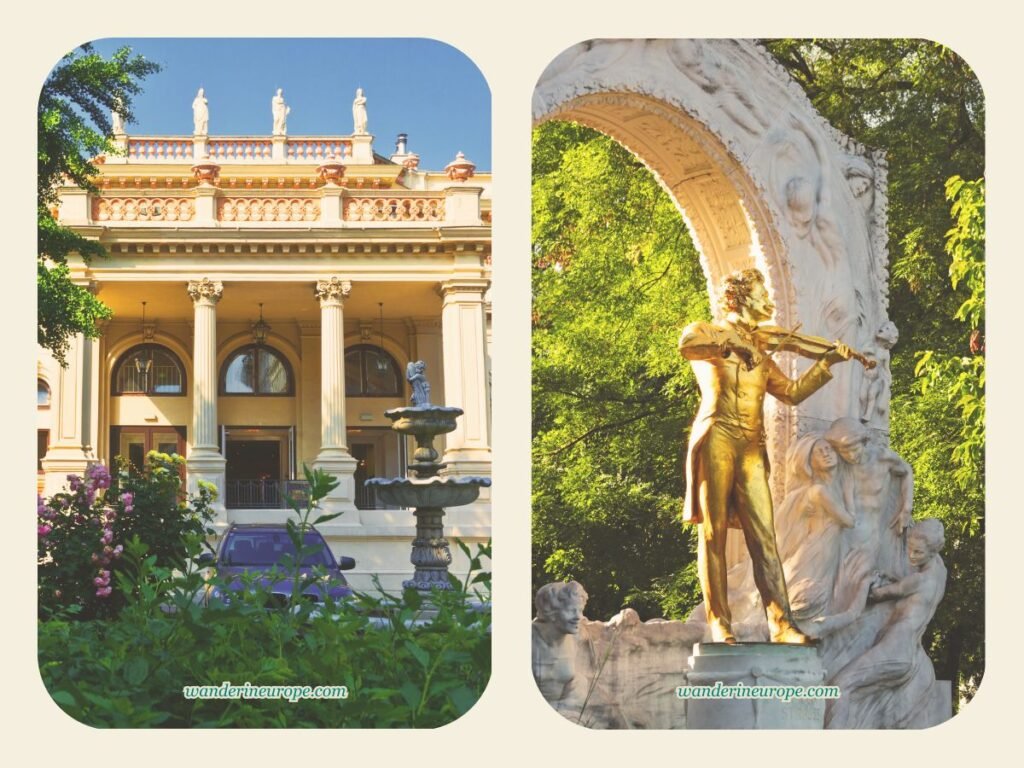
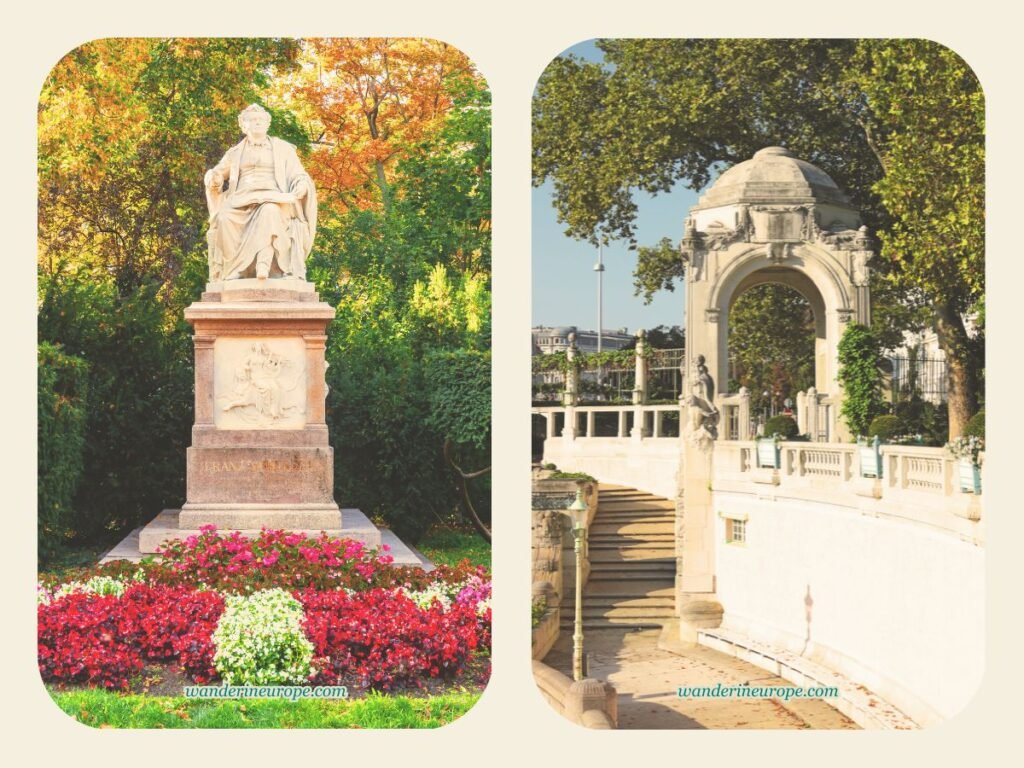

If you’re planning to stroll or cycle throughout the entire length of Ringstrasse, Stadtpark is a nice-to-visit place with free admission that you can add to your itinerary. It’s located along the Parkring segment of Ringstrasse and is simply beside the Museum of Fine Arts.
Compared to other parks and gardens in the city, Stadtpark stands out for the number of monuments dedicated to famous Viennese artists, writers, and composers. It’s like a park for creatives, and with the monuments you’ll find there, Stadtpark seems like a source of inspiration for aspiring creatives.
Some of the monuments you can find here include Hans Canon, Anton Bruckner, Emil Jakob Schindler, Johann Strauss II, and Franz Schubert.
Among these monuments, though, you must see the gilded bronze monument of Johann Strauss II—the composer known as the ‘Waltz King.’ It’s a beautiful monument with a colorful flower bed in front of it. Similar to Mozart’s Monument in Burggarten, Johann Strauss II’s monument is one of the city’s most iconic and photographed landmarks.
You can also find the Kursalon, a historic music hall, in Stadtpark. Interestingly, it was here that Johann Strauss II performed his first concert. Today, Kursalon still hosts concerts. The Alt Wien orchestra regularly performs there, playing masterpieces written by Strauss, Mozart, and Beethoven. It’s a great place to visit if you’re into the musical heritage of Vienna.
9. Setagayapark
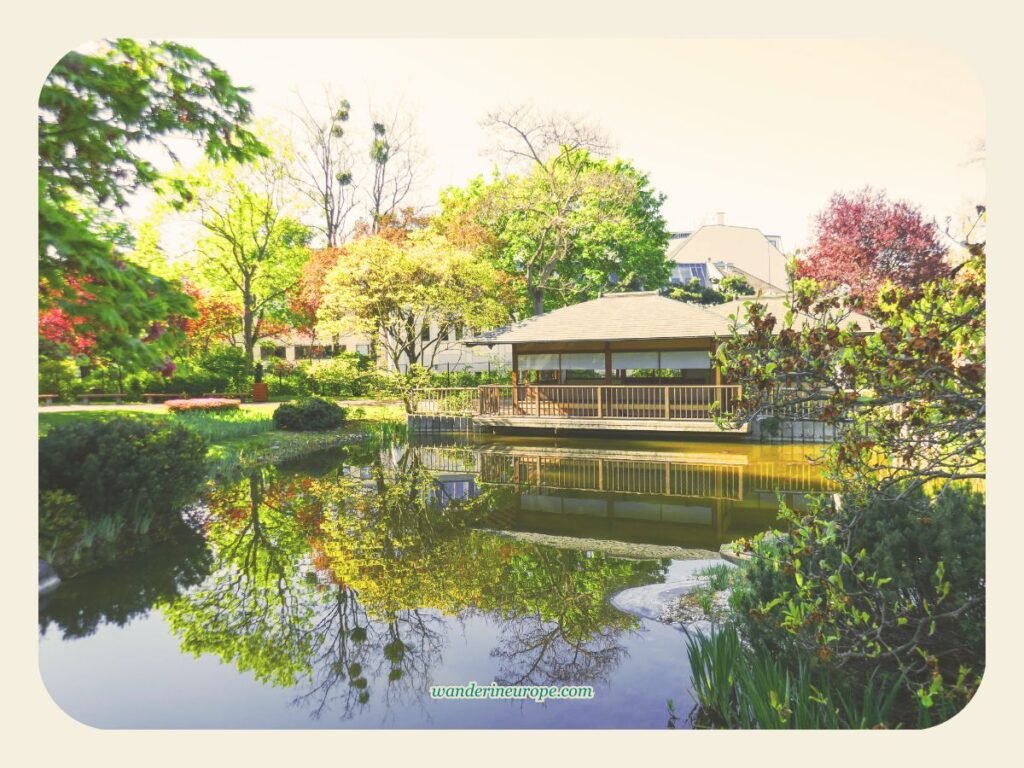
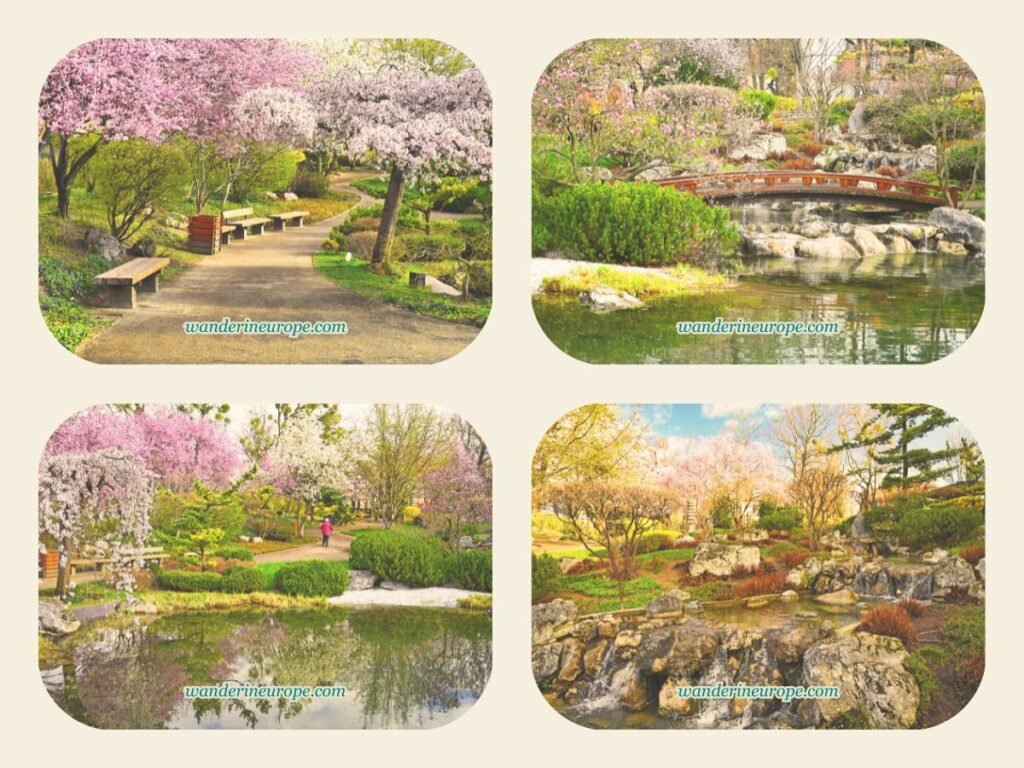

If you’re seeking a non-European destination to explore in Vienna, Setagaya Park is an admission-free attraction that’s definitely worth a visit. It’s a Japanese garden, and it’s quite the cool discovery, being straight out of a country from the opposite side of the world.
If you’re visiting Vienna during spring, Setagayapark is a must-see, not only because it’s free but most importantly because of the cherry blossoms! The park also features garden elements that are typical of Japanese gardens, including a Japanese tea house.
Setagayapark is in the suburbs of Vienna but it’s only a 20 to 25 minute single train journey from Schottentor Station along Ringstrasse. The park is open from March to October from 7:00 am until sunset. The park may be closed during wintry conditions.
10. Donaupark
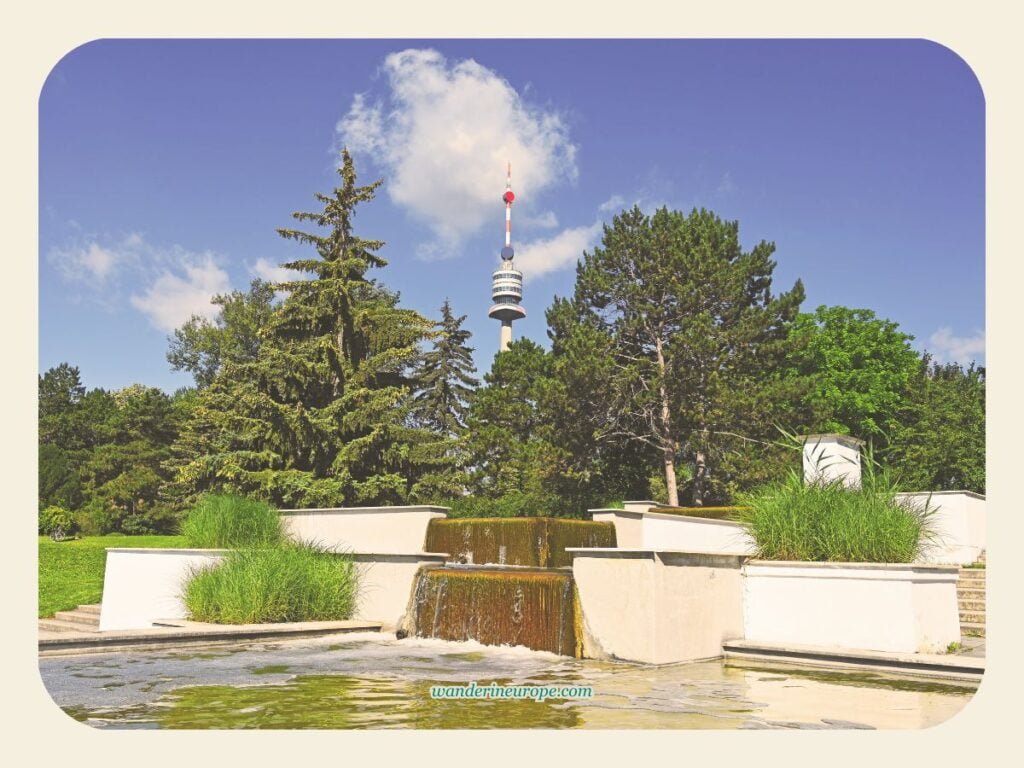

If you’re visiting Danube Tower, which is the tallest building in all of Austria and the highest observation platform in Vienna, you’ll also be visiting Donaupark, or Danube Park. This park is one of the largest in Vienna and a place to be for travelers wanting to see the ‘modern’ appearance of the city.
From this park, you can find photo spots for the city’s iconic skyscrapers, including Danube Tower. Personally, I’m not interested in such views. I’m more into traditional architecture. But if you’re into modern ones, it might be interesting for you to see them.
Check out the view from Danube Tower here.
11. Vienna Peace Pagoda
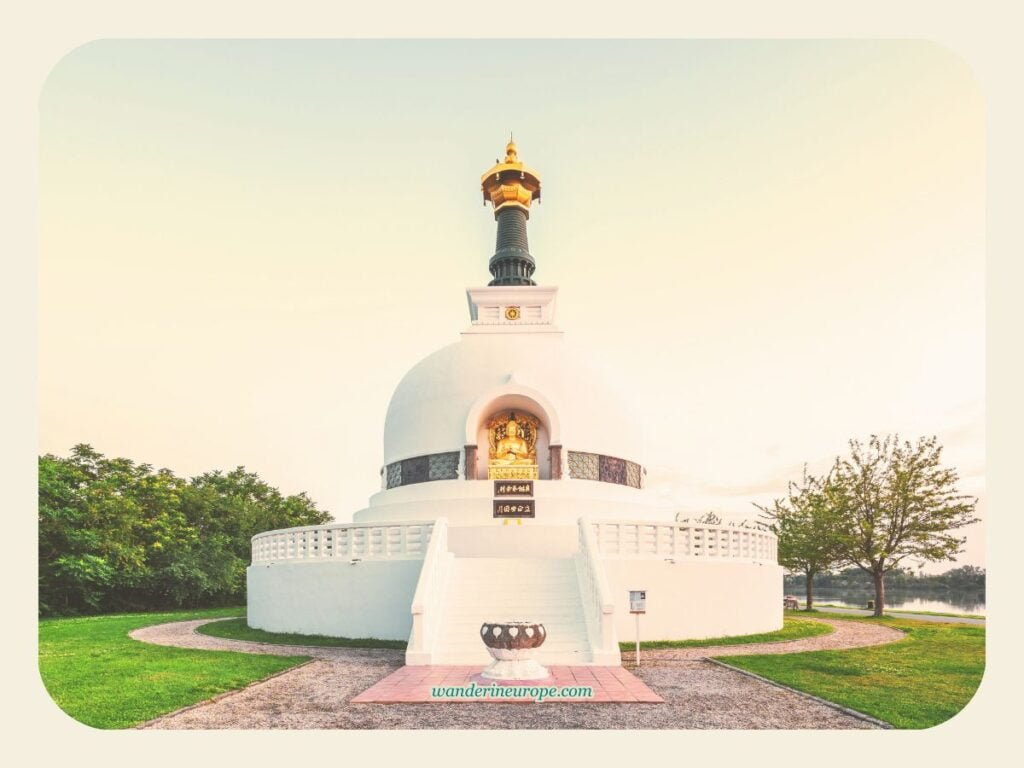

For wanderers looking for another unique discovery without spending, here’s one for you: the Vienna Peace Pagoda. It’s a small Buddhist temple that you’ll encounter while having a relaxing hike or cycling along the Danube River. If you’re coming from the city center, you can expect a 15 to 25-minute cycling time or a 1.5-hour hike.
With its white paint, it’s an eye-catching sight along the riverbank. If you’re visiting during the spring, you might see the cherry tree at full bloom, creating an irresistible picturesque view with the white pagoda. The temple is relatively small but you can definitely feel it amplifying the tranquility that the Danube River exudes.
Actually, it surprised me to discover such a place in Vienna. Thinking Buddhism originated in the far east, I did not expect that Buddhism would be as far-reaching as this. Indeed, similar to Setagayapark, once you get here, you can get this transporting feeling into Japan or China.
During your visit, you’ll likely be drawn to the golden Buddha first, but there’s more to see. A temple just around the corner welcomes visitors; don’t miss the chance to explore it and enrich your experience. Inside, you’ll find a shrine filled with scrolls and additional golden Buddhas.
If you’re like me, who has a different religion—not a Buddhist, you may still want to go inside and reflect. Did you know that this landmark was built to symbolize unity among all humans? It represents hope for world peace, transcending race and religion. Interestingly, the pagoda is one of the 80 landmarks around the world that serves as a reminder for the international peace movement and interreligious dialogue.
Good to know: the pagoda and temple also host annual ceremonies and events, such as Vesākha celebrations and commemoration festivals of Hiroshima and Nagasaki.
12. MQ Libelle
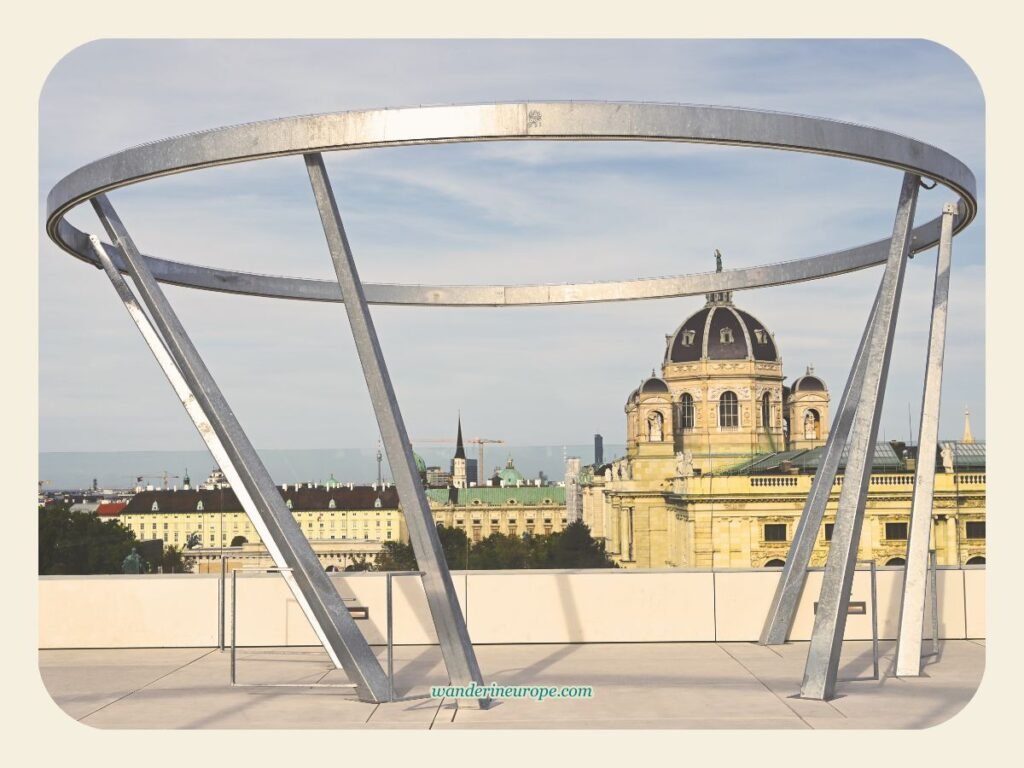

Vienna has several viewpoints, including the north and south towers of Stephansdom, Danube Tower, the terrace of Karlskirche, and the rooftop of Gloriette. However, if you’re in the Old Town, the most accessible and admission-free viewpoint you can visit is MQ Libelle.
It’s a viewing terrace located on the roof of the Leopold Museum in the MuseumsQuartier, offering a panoramic view of the city. You don’t have to worry about your knees hurting to get there as the elevator serves visitors going to the terrace.
The last time I checked, you can also buy food and drinks from the Zur Libelle kiosk on the terrace. As you eat, you can take in the view of the city’s skyline with the domes of Kunsthistorisches Museum, Naturhistorisches Museum, and Hofburg very visible. If you look down, from the terrace, you can see an overview of MuseumsQuartier’s square where you can people-watch visitors hanging out, coming in and out of the complex.
13. Stephansdom
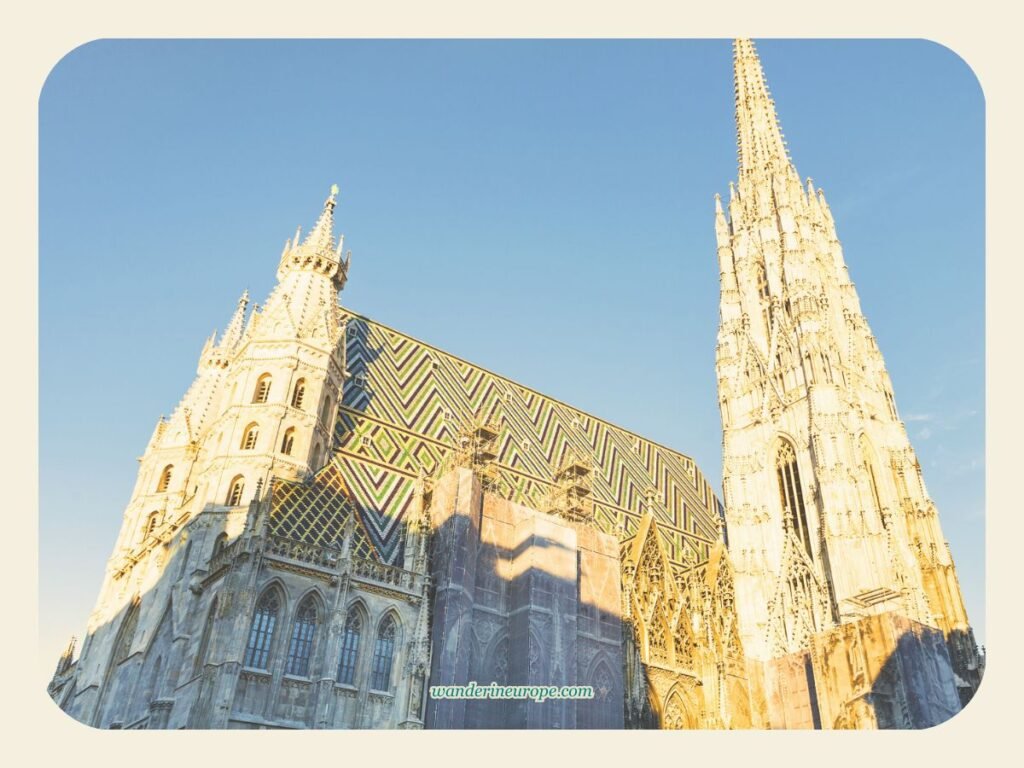
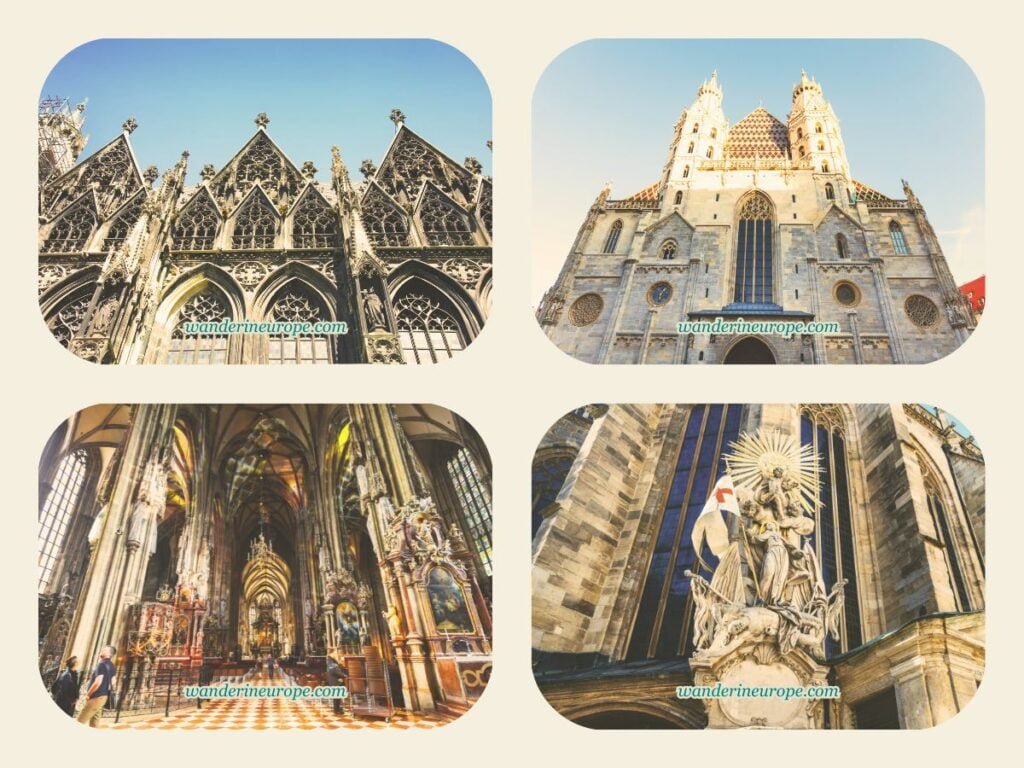

Whether you’re Catholic or not, if it’s beauty that costs you nothing you’re seeking, Stephansdom is a must-see. Located at the very heart of the Old Town, Stephansdom is the largest and most significant religious landmark in the city.
It dates back to Roman times and has witnessed some of the greatest sieges and battles in history. In fact, a cannonball from the Turkish invasion even embedded into the walls of Stephansdom’s tower!
Especially if it is your first time in Europe and Vienna is the first city you’re visiting, the beauty that you can behold from Stephansdom will inspire you to see more churches in Europe. This gothic cathedral is simply spectacular. Just one look at its intricate spire and its colorful roof depicting the coat of arms of the Habsburgs will make you understand why it is a must-see.
Come inside and the magnificent marble gothic pulpit will welcome you. When I saw it, I thought it was silk and laces turned into stone. Of course, there’s the lofty gothic vaulted ceiling which I believe could make anyone wonder: ‘how was it possible to build with Medieval technology?’
Anyhow, here’s something to note: while there are parts of Stephansdom that are free of charge to explore like the narthex and front part of the nave, most parts of the interiors of the church are ticketed… but don’t worry, it is not expensive and you can simply consider it as a donation for the upkeep of the church.
Access to the view decks of the church — the north and south towers — also have an admission fee. Guided tours are available inside the cathedral if you want to have an insightful visit to the church.
There’s much to explore at Stephansdom. Here’s all you need to know before your visit Stephansdom.
14. Peterskirche
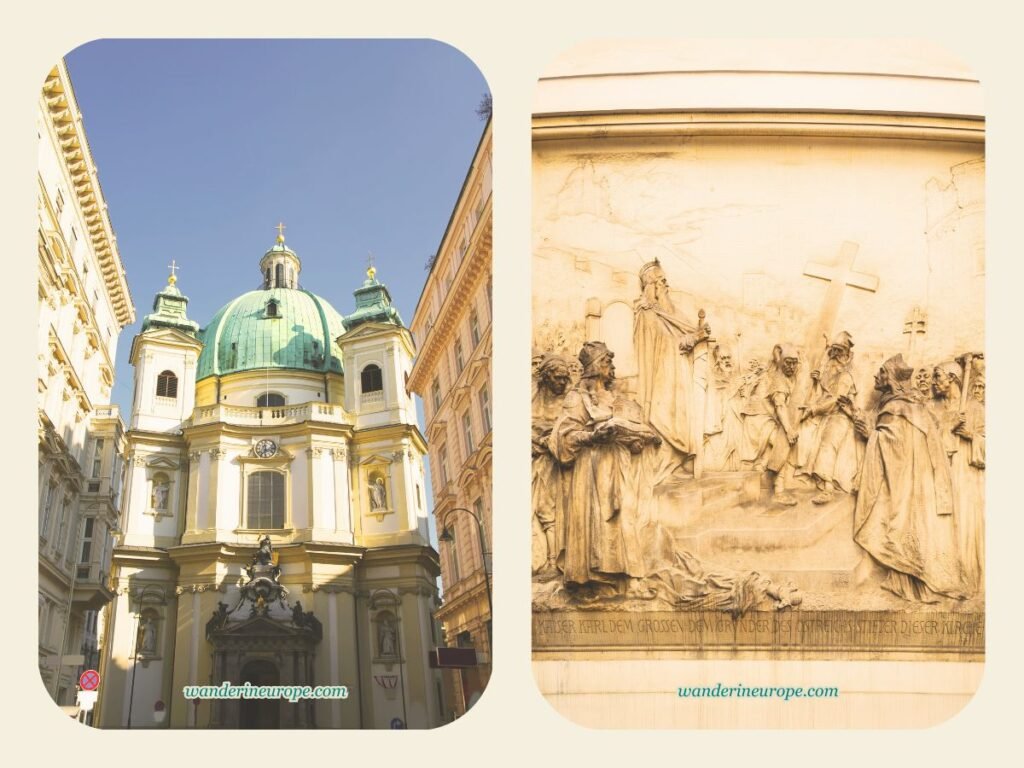
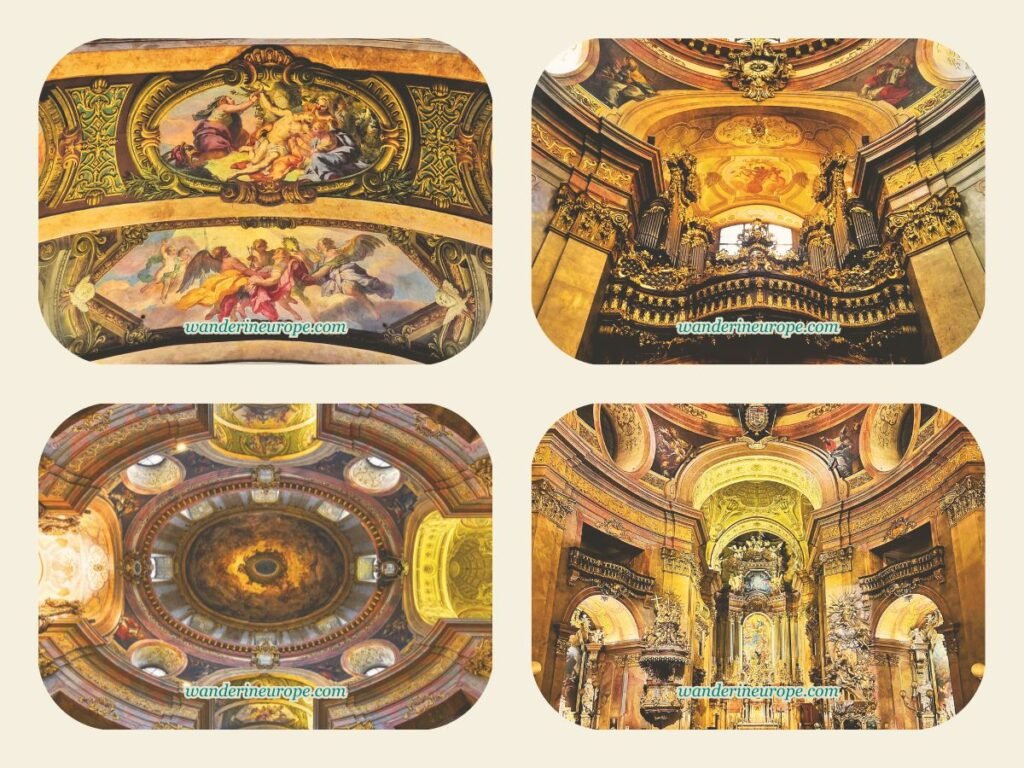

Spectacular churches dot the Old Town, and Stephansdom is just the start. Amazingly, these churches are also free to visit. So, if you’re going on a church-hopping spree in Vienna, it would feel like a frictionless beauty hunt! If you’re currently in Graben or Stephansdom, another beautiful church is only a quick stroll away: Peterskirche.
In my opinion, it is the most stunning Baroque church you’ll find on the perimeter of Ringstrasse. Its magnificence could match the ones you can see from the palaces in the city. Take a moment to admire the frescoes of the saints below the dome of this church; they’re so lifelike that you might think they’re three-dimensional.
Interestingly, Peterskirche in Vienna is said to be the church founded by Charlemagne, a claim supported by the relief outside. Good to know: Peterskirche offers free organ concerts! Just so you know, there’s also a special concert available for a small fee.
Check out my post about Peterskirche to discover everything that’s beautiful in this church.
15. Annarkirche
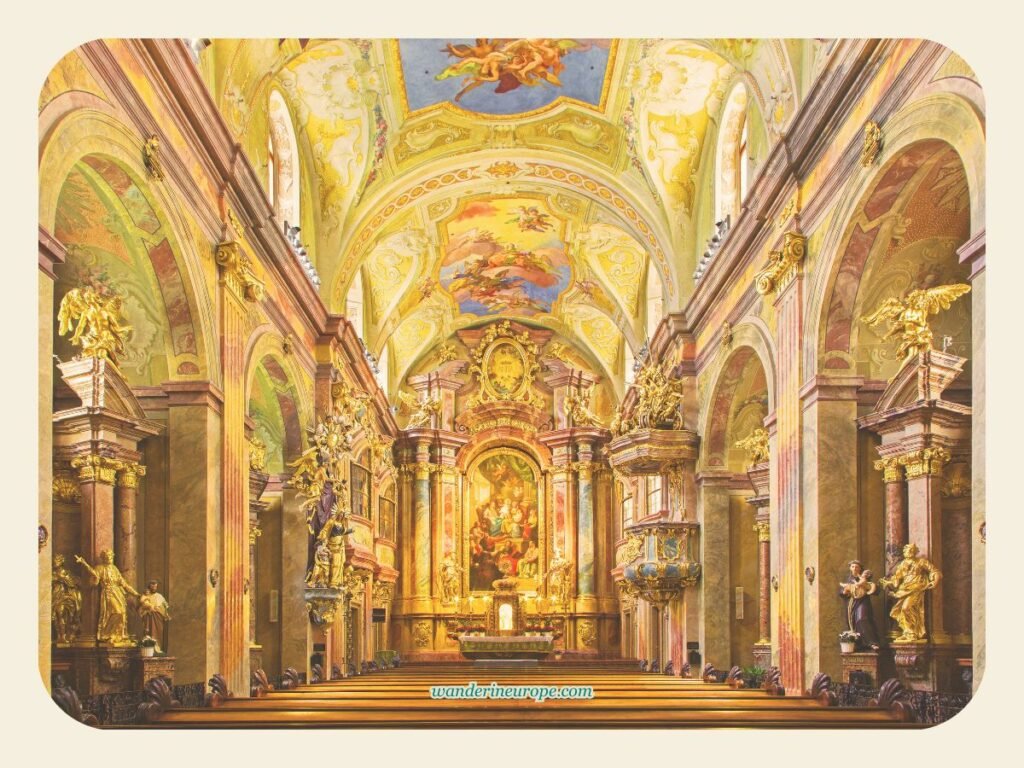
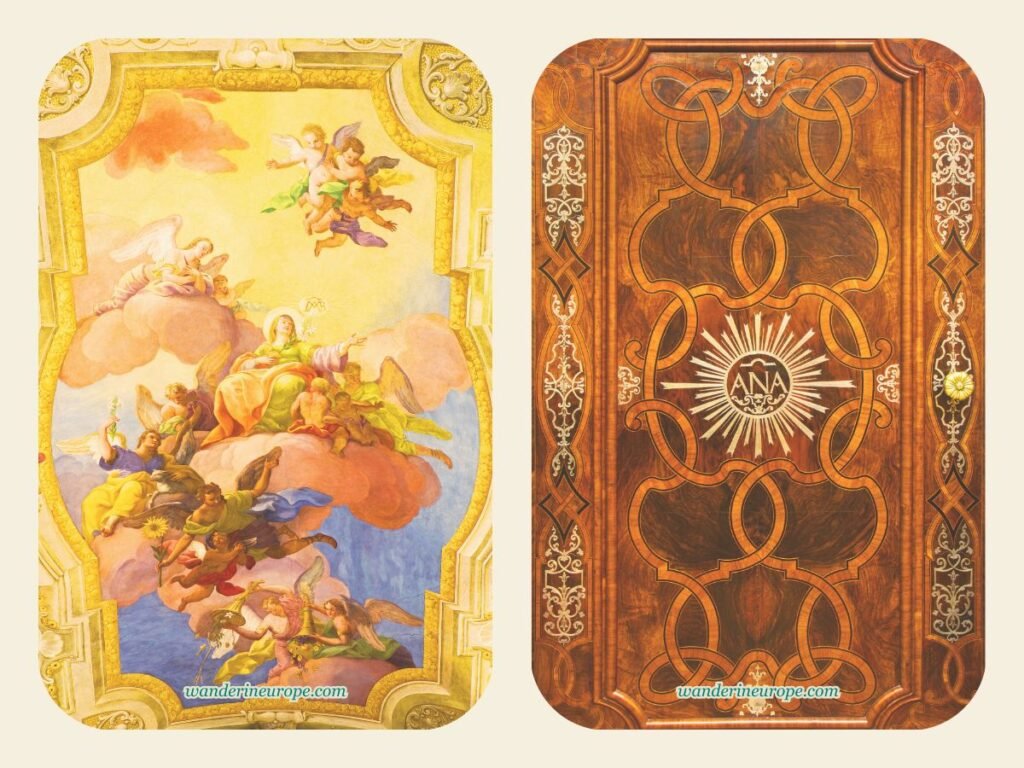

Splendid — it is the best word to describe the Baroque churches in Old Town Vienna. It fits well not only with Peterskirche but also Annakirche. It’s one of the little gems I discovered in Vienna, of course, free to visit.
From the narrow street of Annagasse, before you enter, it’s not easy to tell whether it’s a beautiful church or not. But when you finally step foot inside, the Baroque spectacle unfolds. While Peterskirche looks more regal, Annakirche stands out for its colorful interiors: the marbles that make up the walls and the frescoes depicting scenes from the life of Saint Anne. Either way, they’re both splendid!
Interestingly, Annakirche isn’t originally Baroque. It was Gothic until the early 17th century when the Jesuits renovated it into Baroque style.
Here’s a tip: if you’re Catholic and visiting Vienna on the last week of July, save the 26th to see Annakirche. A relic of Saint Anne is exhibited in Annakirche during this date, which is also her feast day.
If you want to make a worthwhile visit to this church, you can attend a concert inside. The last time I checked, Annakirche hosts a variety of classical concerts. In a way, it’s a unique experience with their string quartets and historical instruments.
16. Jesuitenkirche
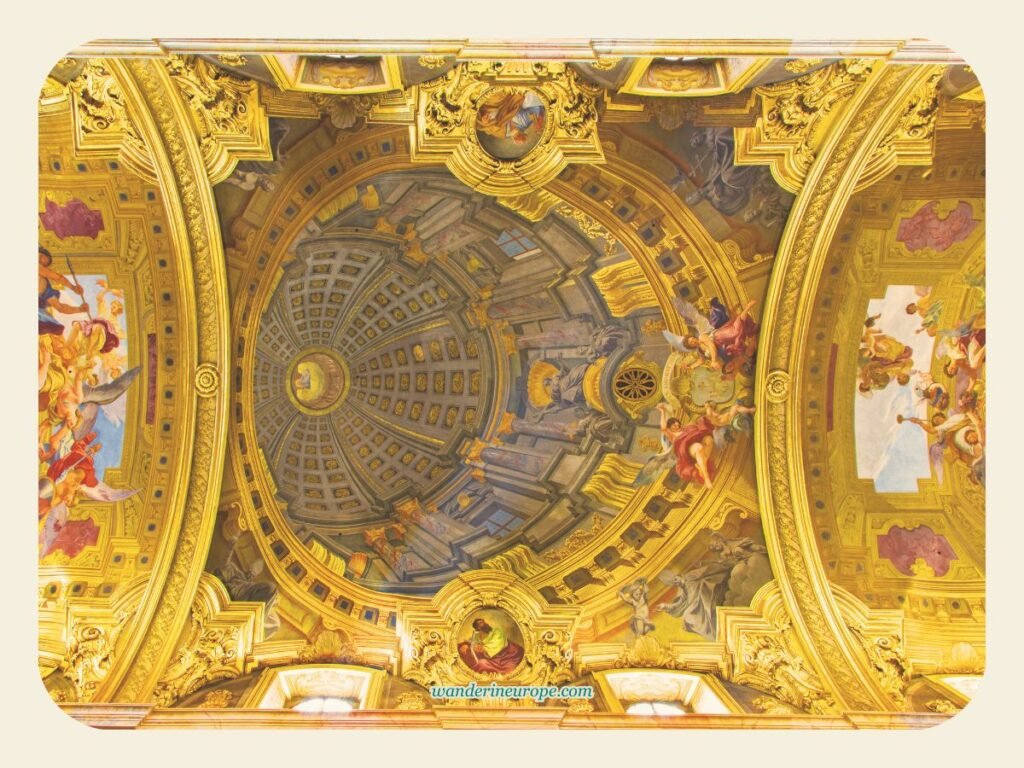
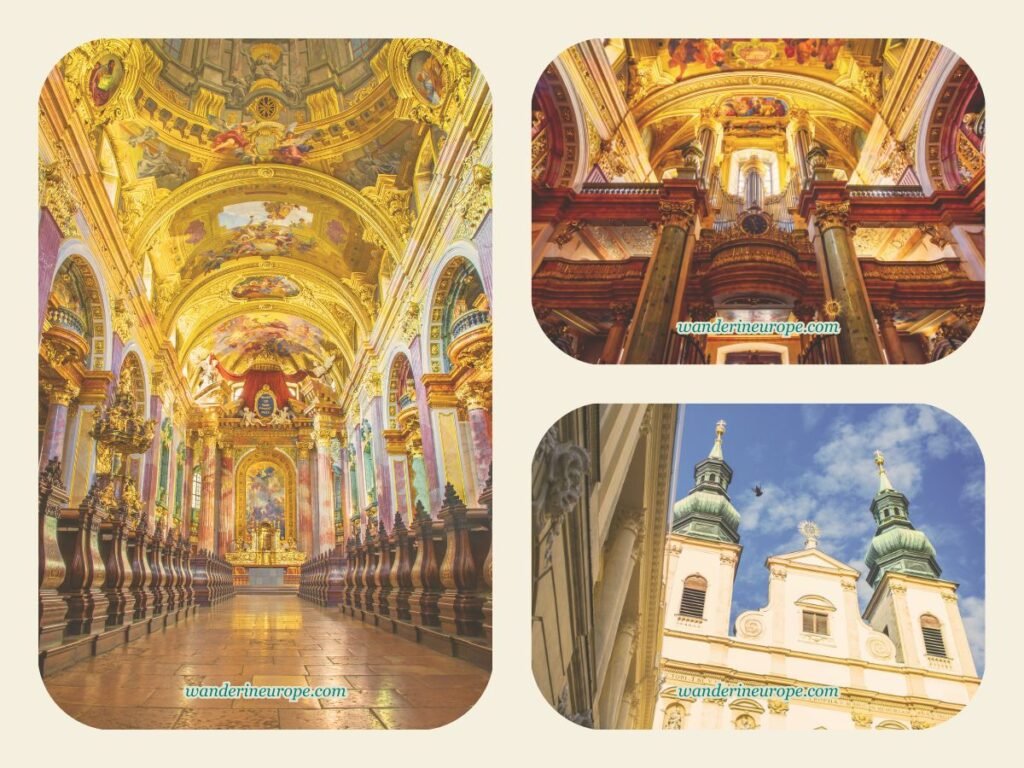

If there’s a church in Vienna that greatly impressed me with its trompe l’oeil frescoes, it’s the early 17th-century Jesuitenkirche. It kinda reminds me of Innsbruck Cathedral, which was made by the Asam Brothers—two of the most influential artists of the Bavarian Baroque movement from Munich.
The playful and mesmerizing trompe l’oeil effect used in the creation of the religious artworks in these churches made me marvel for minutes. It must have taken a lot of imagination and talent to create them! Like, you have to see the dome fresco in the middle of the nave of this church. See how the image changes as you move perspectives from the narthex to the point below it.
Of course, entry to Jesuitenkirche is free. What sets the experience in Jesuitenkirche is their special music program, which involves The Chorvereinigung St. Augustin and the Consortium Musicum Wien. Both choirs feature musically qualified laypeople. And they often collaborate with members of the Vienna Symphony Orchestra, creating a rich musical experience for their audiences.
17. Dominikanerkirche
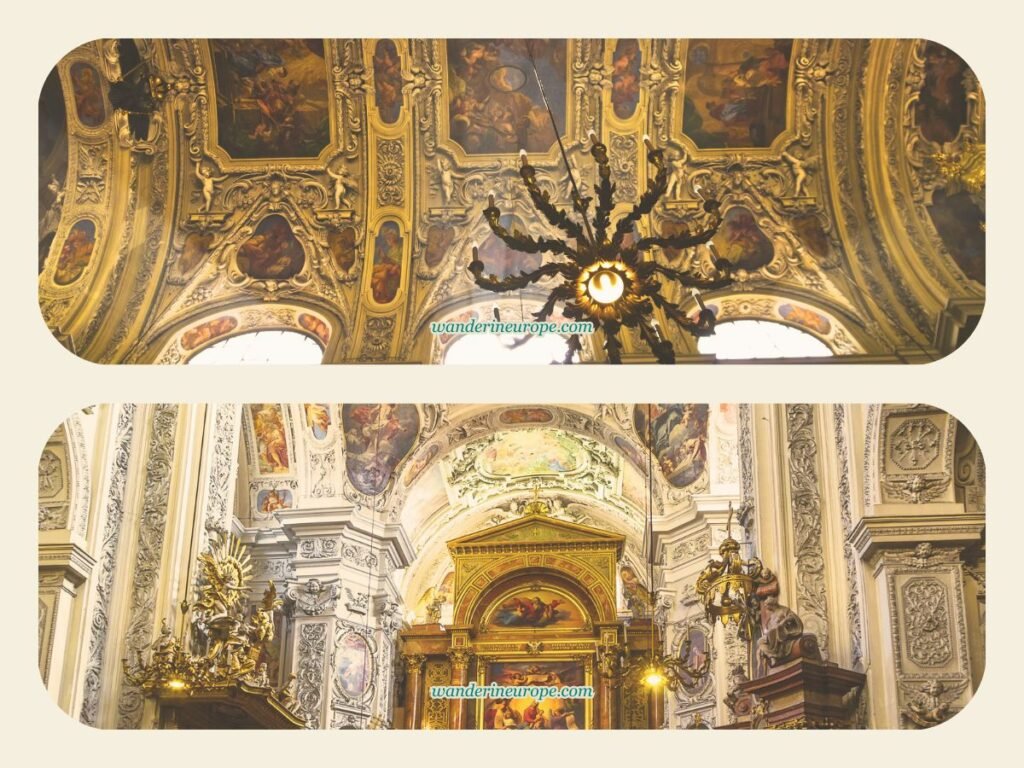
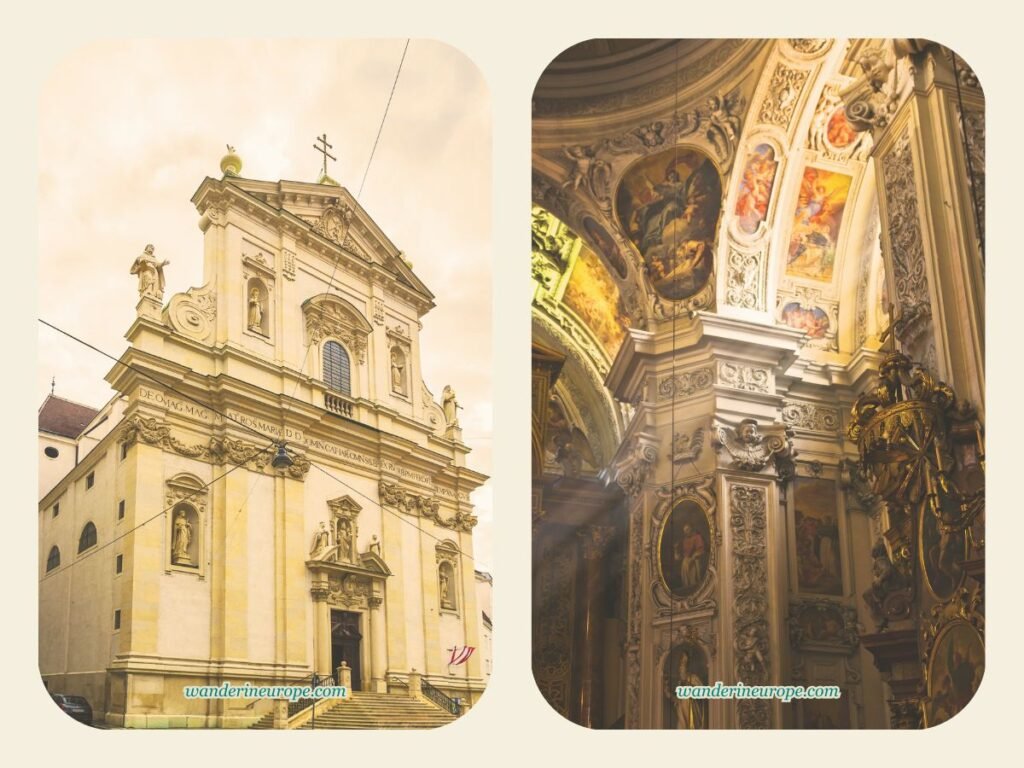

When it comes to stuccoworks, Dominikanerkirche is a free place to visit that doesn’t disappoint. Architecture enthusiasts: I like the blend of early Baroque touched with Roman-Lombardic style architecture and its stucco-heavily-adorned ceiling and walls.
This time, however, this church reminded me of Salzburg Cathedral with its elegant white interiors. Actually, if you’ve been to Italy and visited Florence’s Santa Maria Novella, the sights inside this church would look familiar.
Interestingly, this beautiful church is now the third church to stand on this hallowed ground, with its roots tracing back to the 13th century. Today, its ceiling is a canvas of religious stories itself, painted by Matthias Rauchmiller in 1675, showcasing 46 scenes from the life of Our Lady.
18. Votivkirche
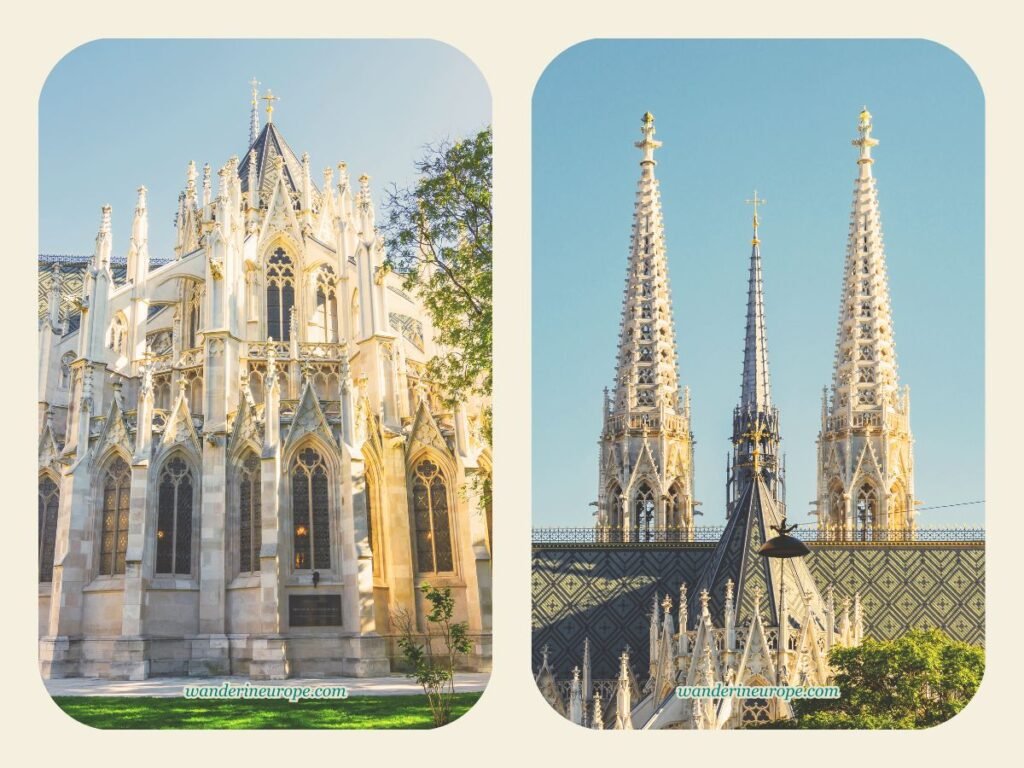
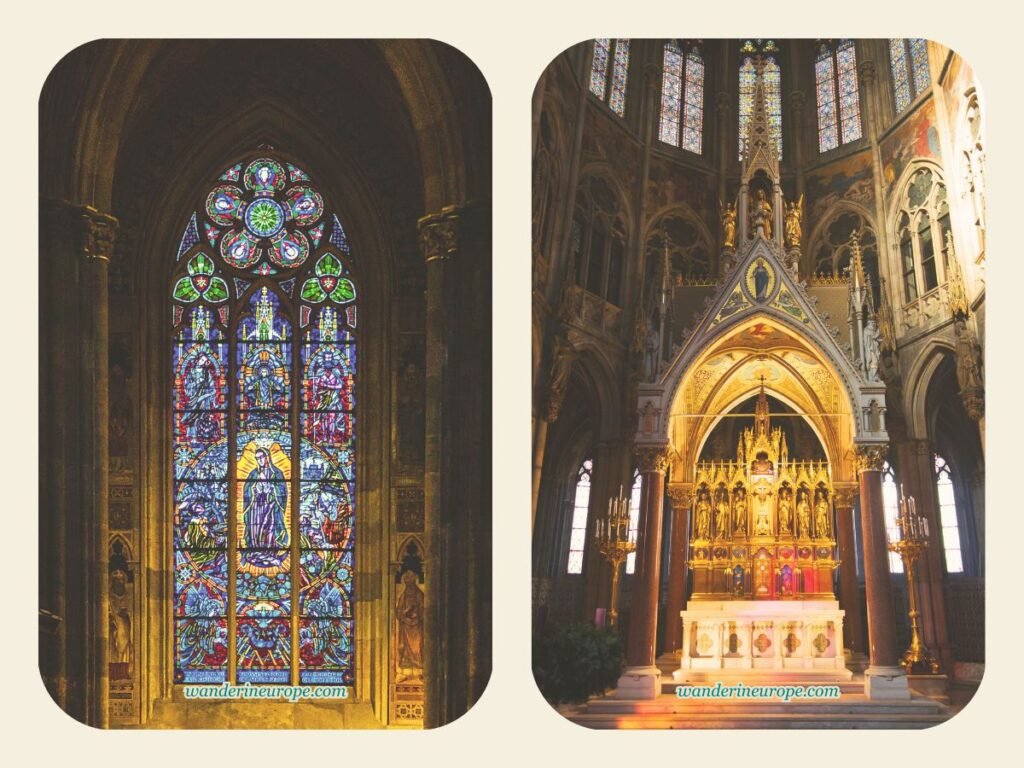

Visiting Vienna, you’ll surely be soaking up with Baroque magnificence. From the churches to the palaces, they’re marvels of Baroque architecture. Even the interiors of the Gothic St. Stephen’s Cathedral are layered with Baroque! For a change of scene, though, see Votivkirche.
It’s one of the free places in Vienna that dropped my jaw to the ground because of its enchanting neo-Gothic architecture. The twin towers of this church poking the sky with angelic beauty are a camera magnet for sure! Thus, this church belongs to my top recommendations, especially if you will be wandering along Ringstrasse.
When you visit Votivkirche, you got to check out the flying buttresses outside the choir. Inside, there’s the magnificent Antwerp Altar from the 1460s and the Renaissance-style tomb of Nikolaus Salm, a hero of Vienna during the Turkish siege way back in the early 16th century.
Apart from its picture-perfect appearance, what makes Votivkirche more interesting is its history. Did you know that the Votivkirche in Vienna was built as a token of gratitude for Emperor Franz Joseph’s survival after an assassination attempt in 1853?
The Emperor’s brother, Archduke Ferdinand Maximilian, initiated the construction of this neo-Gothic style church to thank God for saving the Emperor’s life. Funds were raised throughout the Empire, and the church was dedicated in 1879 on the silver anniversary of Emperor Franz Joseph and Empress Elisabeth.
19. Holy Trinity Greek Orthodox Church
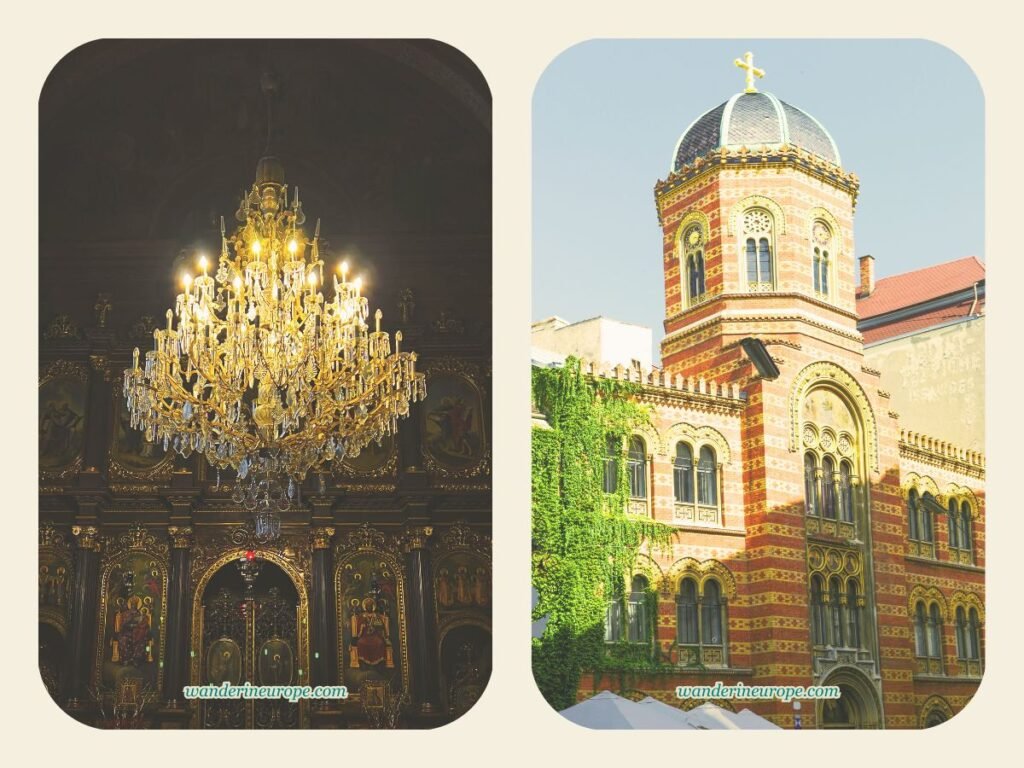
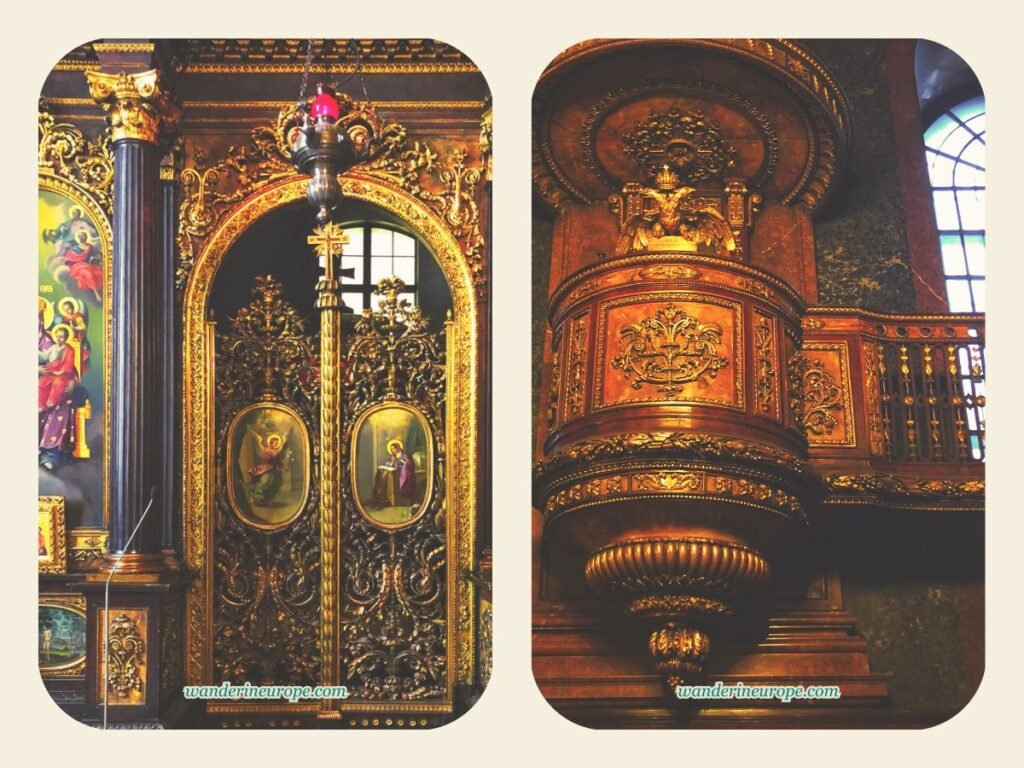

Among the churches in Vienna, Holy Trinity Greek Orthodox Church is the most unique, thanks to its cultural affiliation and architecture not common to most churches in the city: its distinctive Byzantine Revival architecture.
The church’s interior is adorned with gilded stuccoes and frescoes that unmistakably reflect the Byzantine style. The golden halos surrounding the saints in the frescoes, along with the church’s dazzling chandelier, are sure to catch your attention!
Interestingly, Holy Trinity Greek Orthodox Church is blended with Baroque-style decoration, reflecting the artistic traditions of southern Germany and Austria. It’s amazing how the builders incorporated local and foreign cultures into parts of the church to make it uniquely stunning.
All these made me think that this free-admission attraction in Vienna is a little gem in the Old Town, and a nice landmark to see during a walking tour.
If you decide to visit, finding Holy Trinity Greek Orthodox Church in Vienna is not hard, especially when you’re already in the historic Greek neighborhood or Fleischmarkt. There, you’ll see it stands very noticeable with its two-tone brickwork and gilded archways.
By the way, this church is currently the seat of the Greek Orthodox Metropolis of Austria since 1963, under the Ecumenical Patriarchate of Constantinople.
20. Rathaus
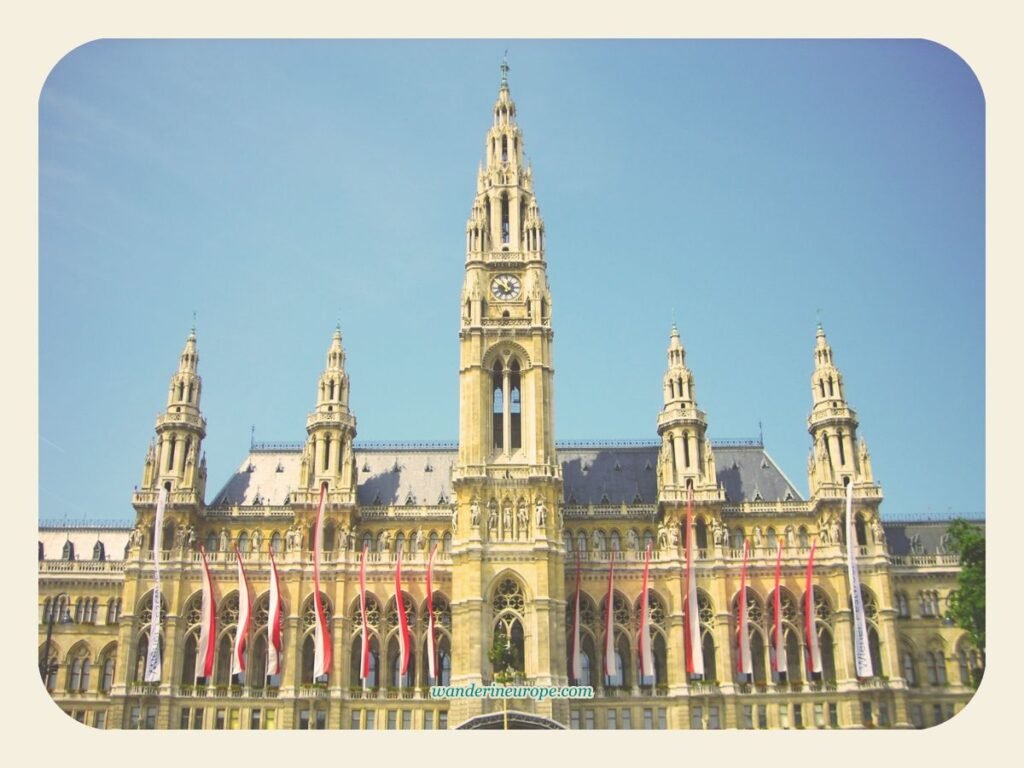
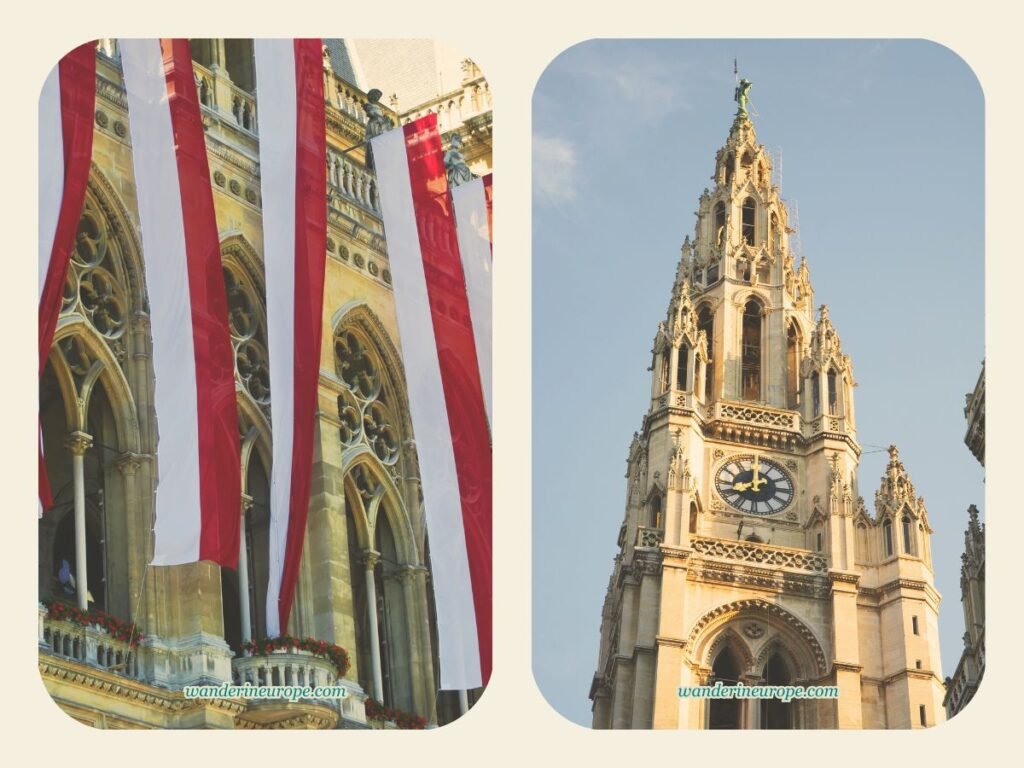

Did you know that there are several places in Vienna that offer free guided tours? One of them is Rathaus (City Hall), which is a must-see for architecture enthusiasts like me. This Flemish-touched neo-Gothic landmark in Vienna is a really iconic sight in the city.
Go to the center of Rathausplatz, the square in front of the city hall, for the best viewing angle. If you have a camera that can zoom many times or if you have binoculars, that spot is also a great place to view/photograph Rathausmann—the bronze standard bearer on top of the tallest spire of the building.
Going back to the tour, you’ll get so many historical insights as you explore the state rooms of the Rathaus, which, by the way, are stunning, too! There are 10 key points of interest inside the Rathaus, and everything will be discussed within 1.5 hours. After the tour, you can visit the museum of the Austrian Revolt, which is also inside the Rathaus.
One of the most interesting features of the tour inside is the continuous moving elevator where people step in and step out while moving.
Note that the guided tours are conducted in German; non-German speakers are given multi-lingual audio guides. The guided tours inside Rathaus are usually conducted every Monday, Wednesday, and Friday at 1 pm. However, they may be cancelled if there are governmental events and official meetings.
Tickets are available only at the City Information Center starting at 8 a.m. on the day of the tour. Reservations are not accepted. The tour accommodates up to 50 participants. Please ensure to collect your tickets by 10 a.m. at the latest, as it operates on a first-come, first-served basis.
Visit Vienna
For ideas and inspiration on making the most of your visit to Vienna, check out the travel plans below.
Find all the travel guides to Vienna and its tourist attractions below.
From great hotel deals to skip-the-line tickets and affordable eSim to cheap rentals, click here for the best hotel deals and more travel discounts.
Resources
So, that concludes my list of 20 stunning free attractions in Vienna. Should you require additional details about each site, such as opening hours, FAQs, or other visit-related information, the links provided below will be quite useful.
- Palais Daun-Kinsky
- Justizpalast
- Burggarten
- Theseustempel
- Stadtpark
- Setagayapark
- Vienna Peace Pagoda
- MQ Libelle
- Annarkirche
- Jesuitenkirche
- Dominikanerkirche
- Votivkirche
- Holy Trinity Greek Orthodox Church
- Rathaus
For a convenient, unique, or more enriching visit, check out these experiences and services:


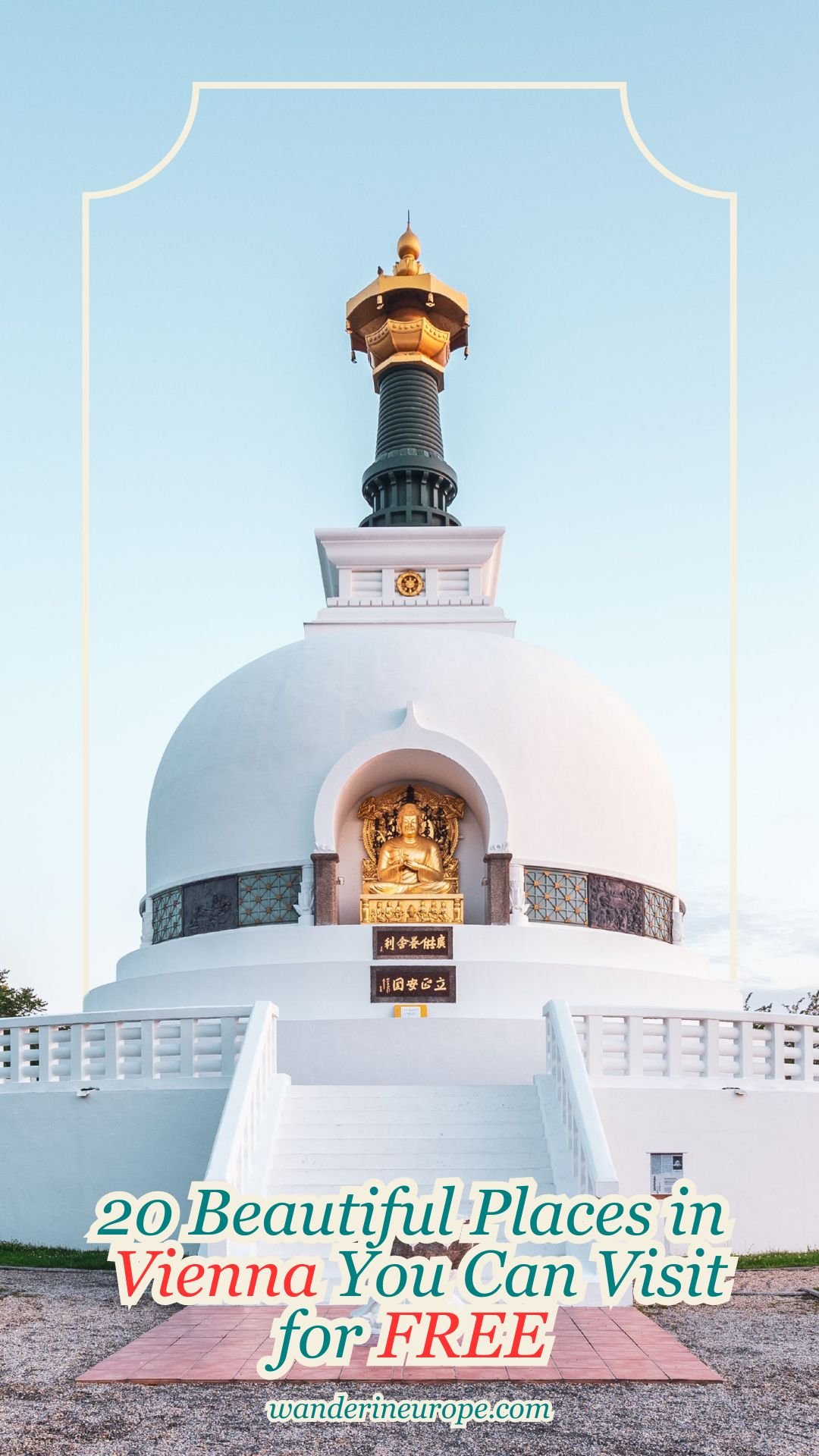
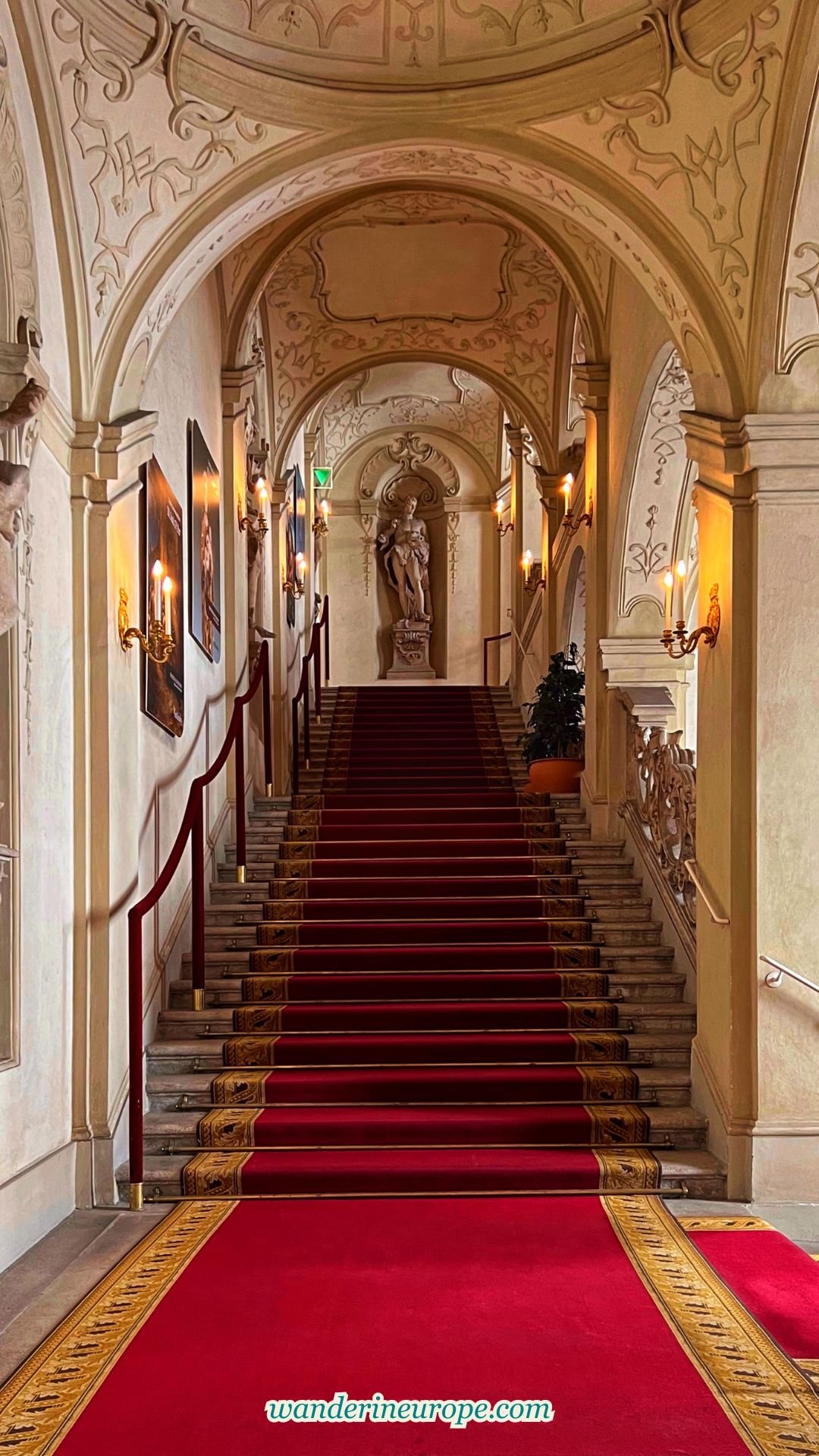

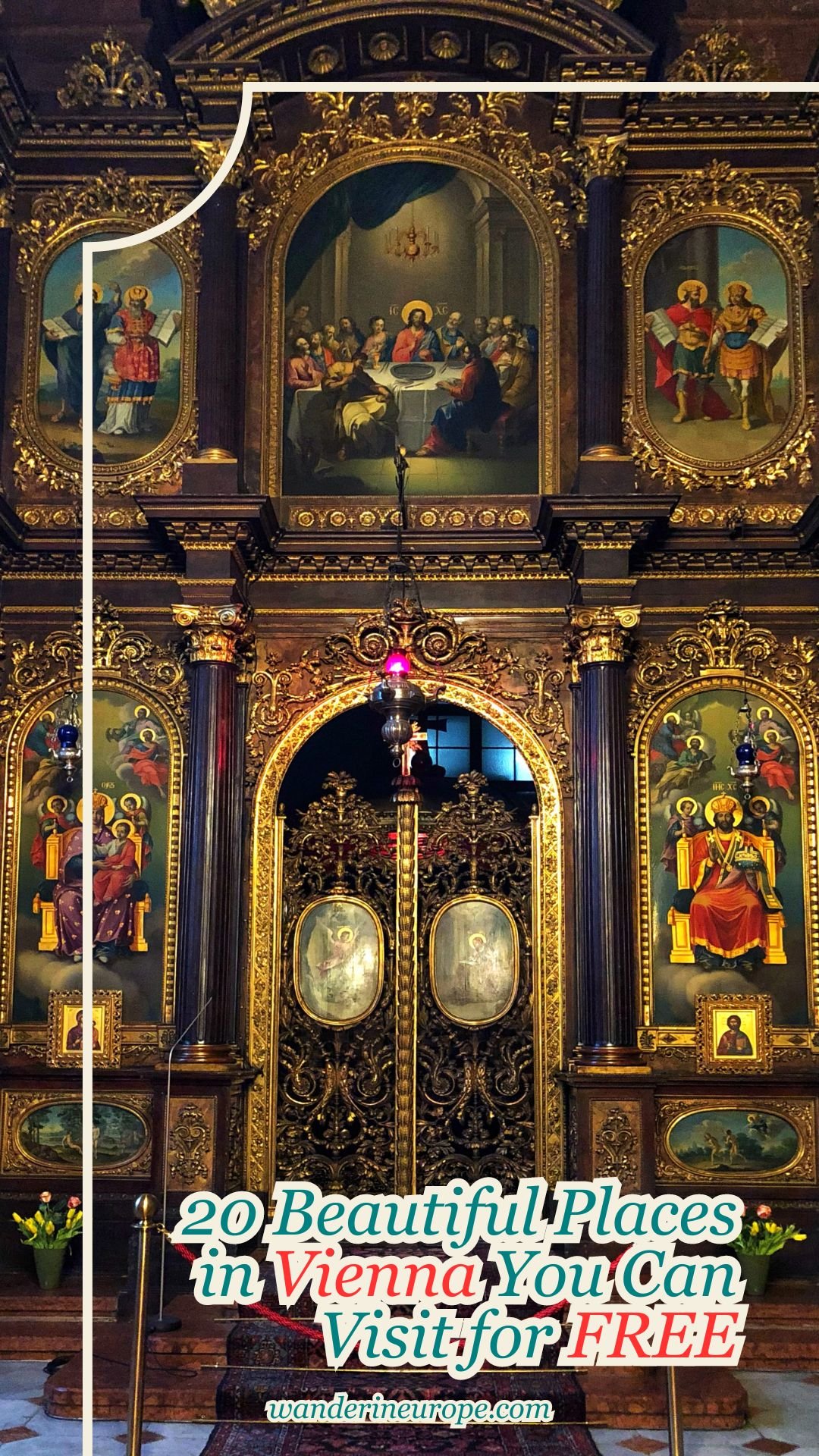
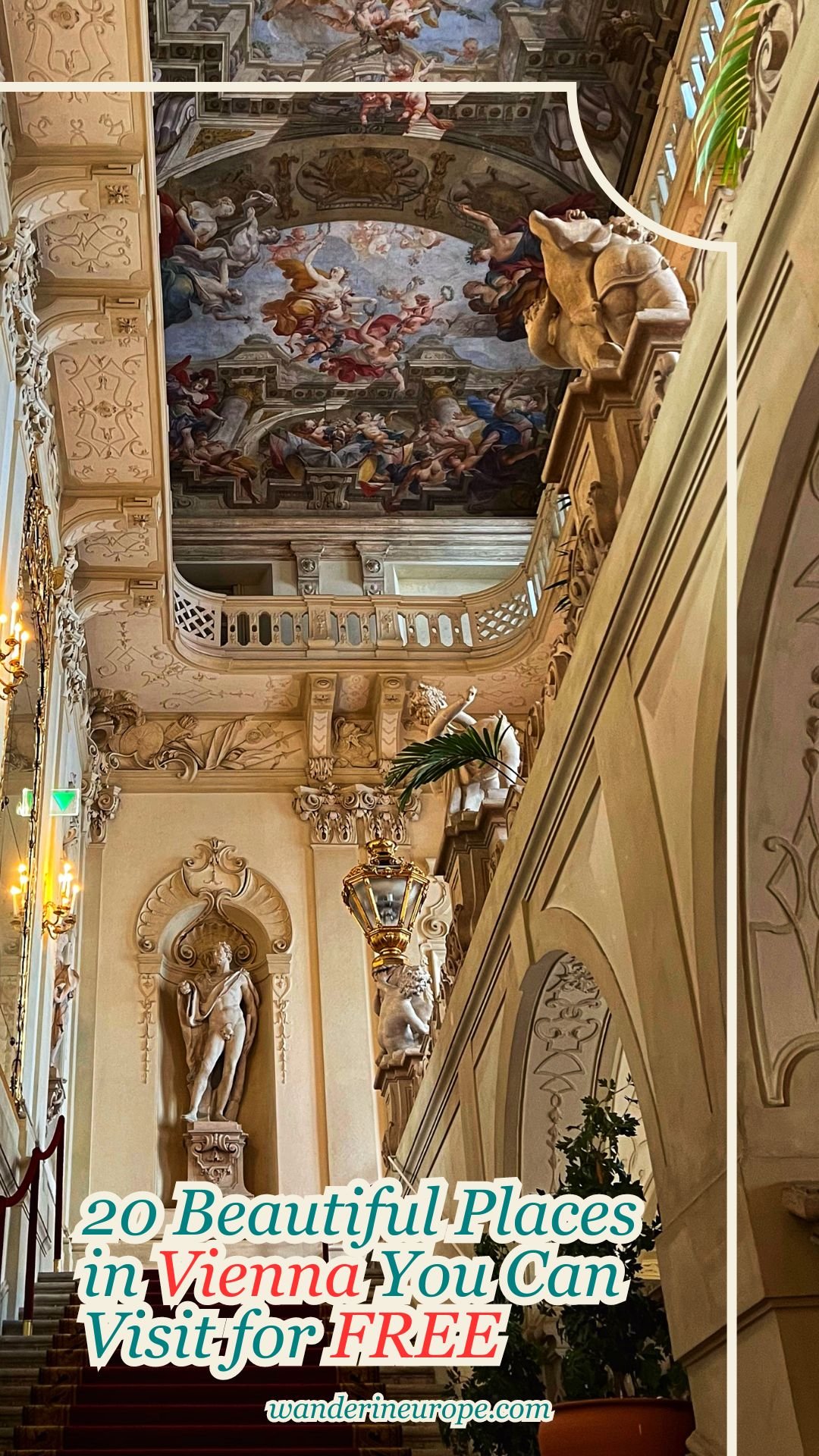
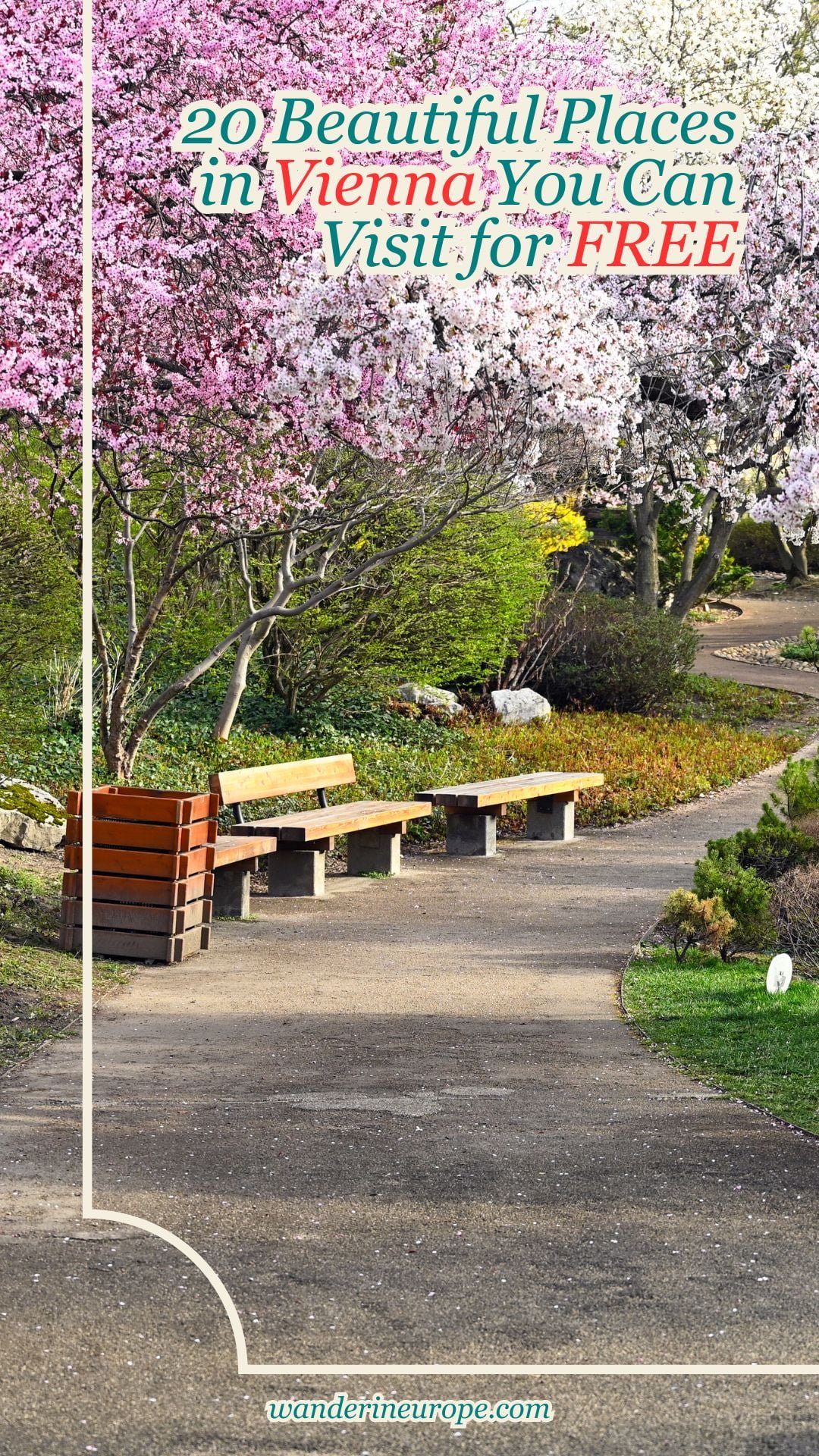
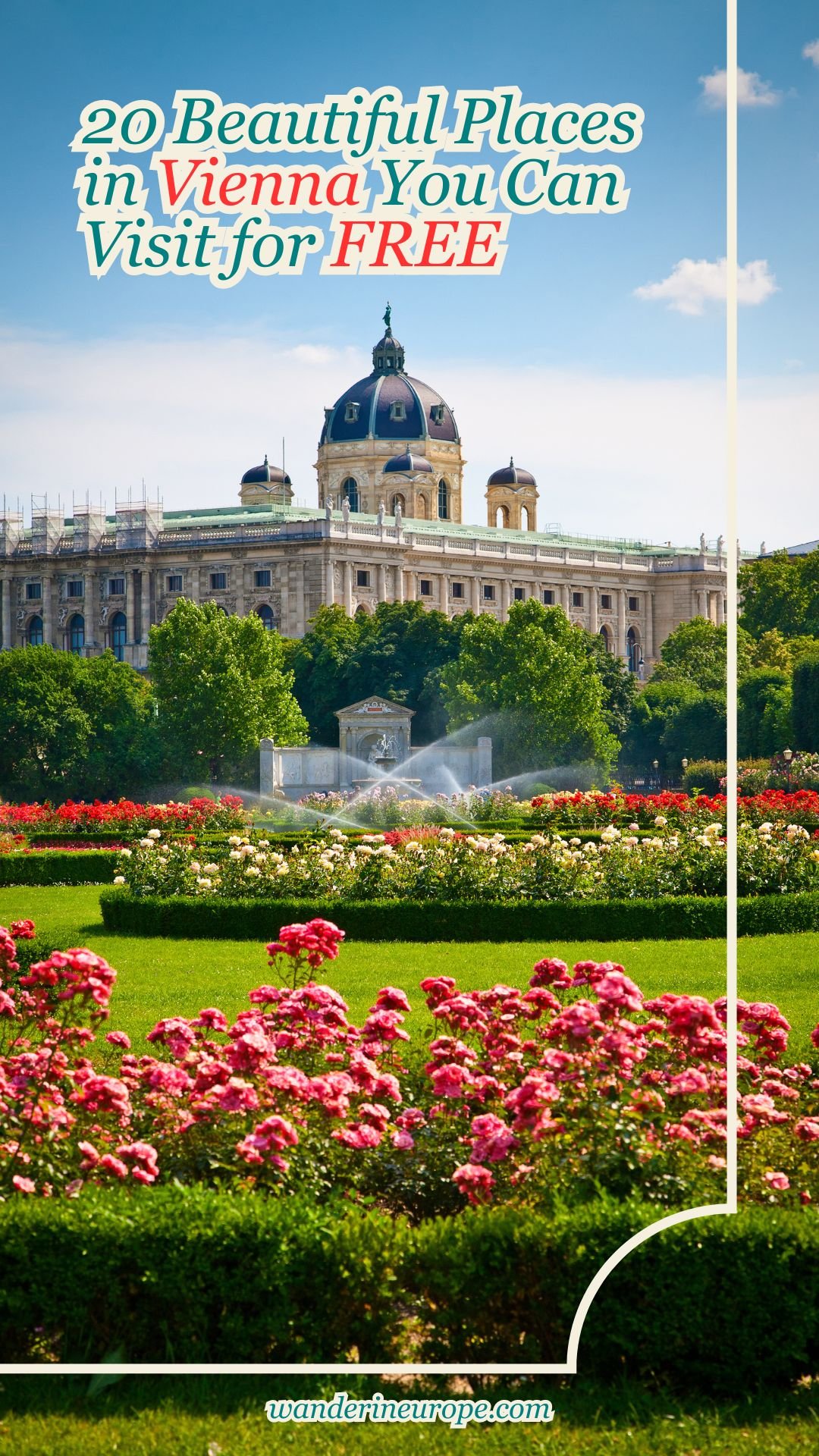
Pin this to save it for later or bookmark it to read anytime.

